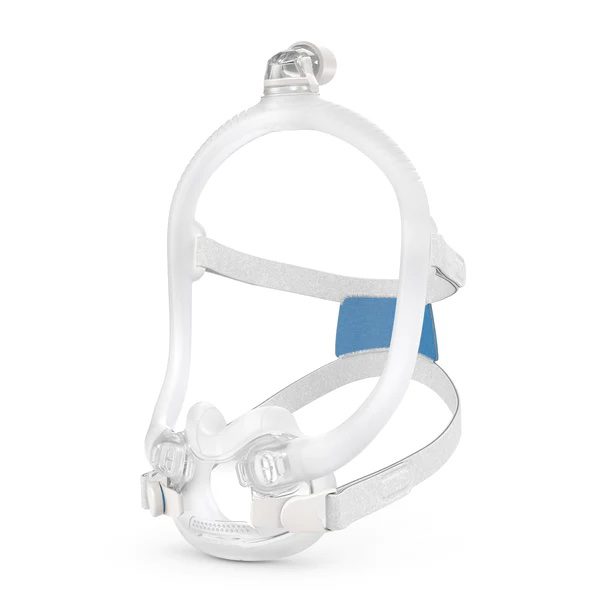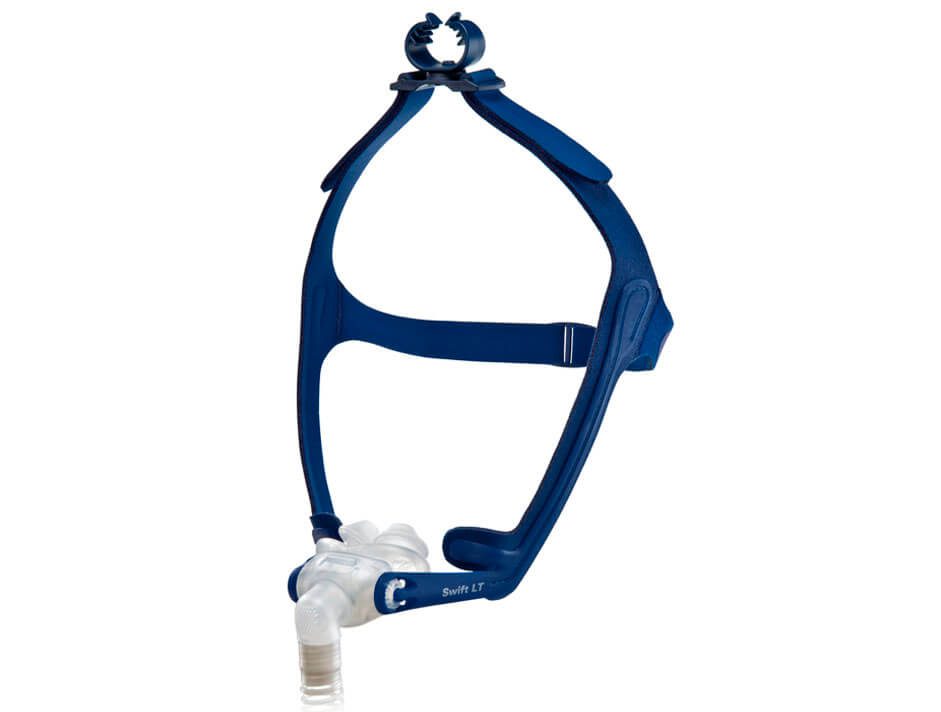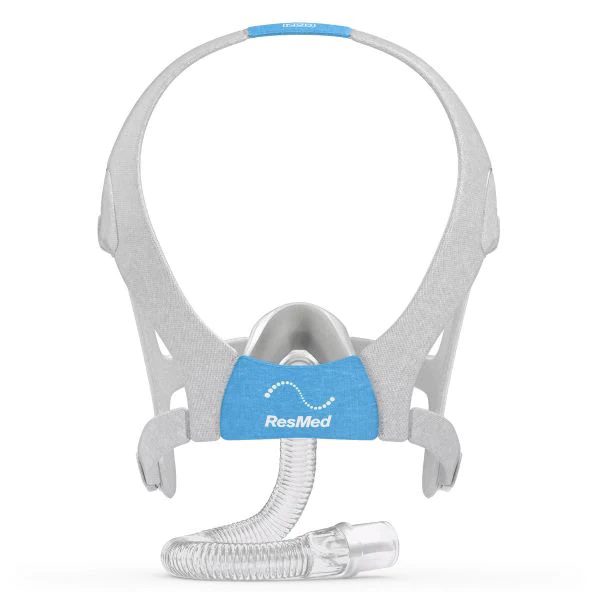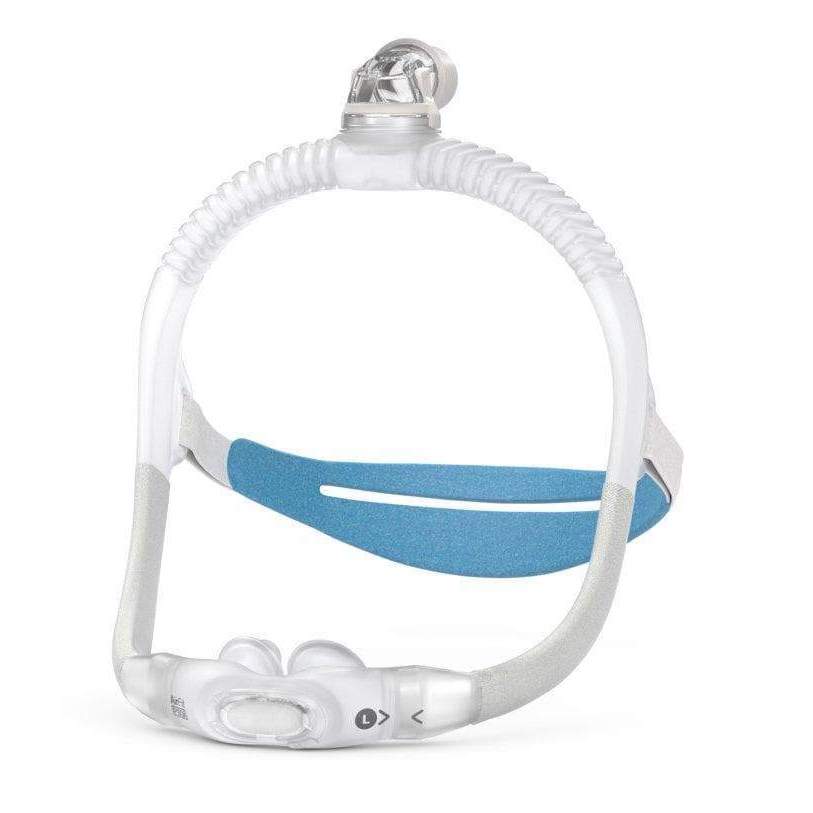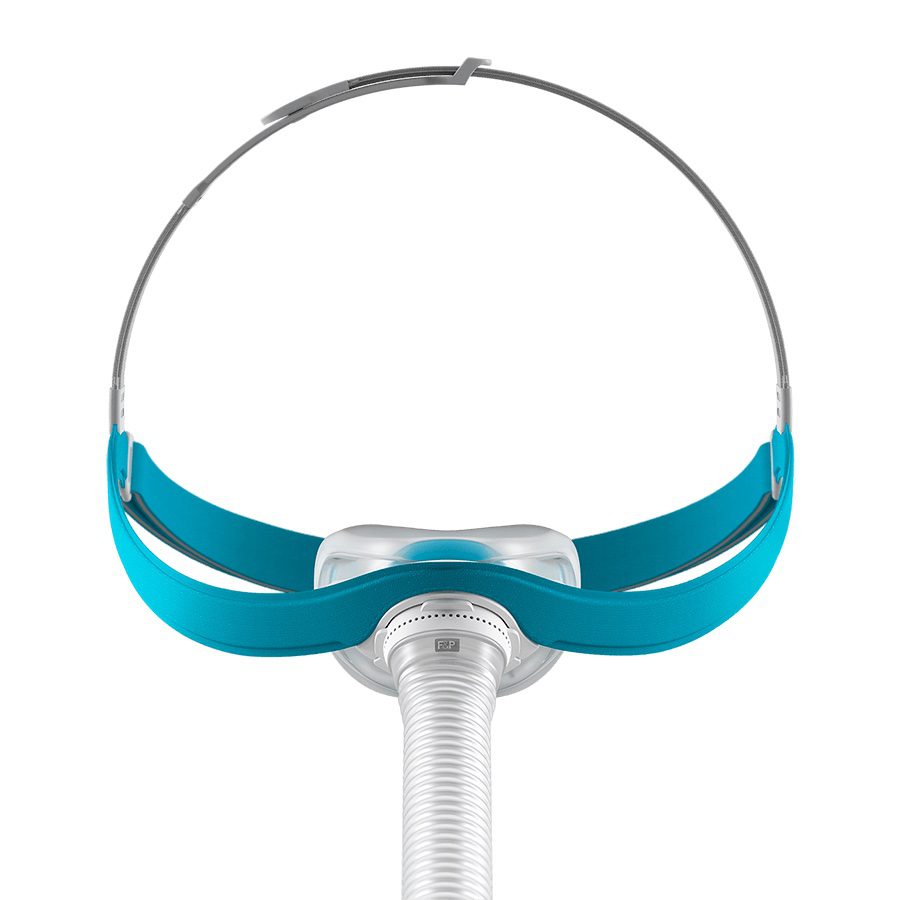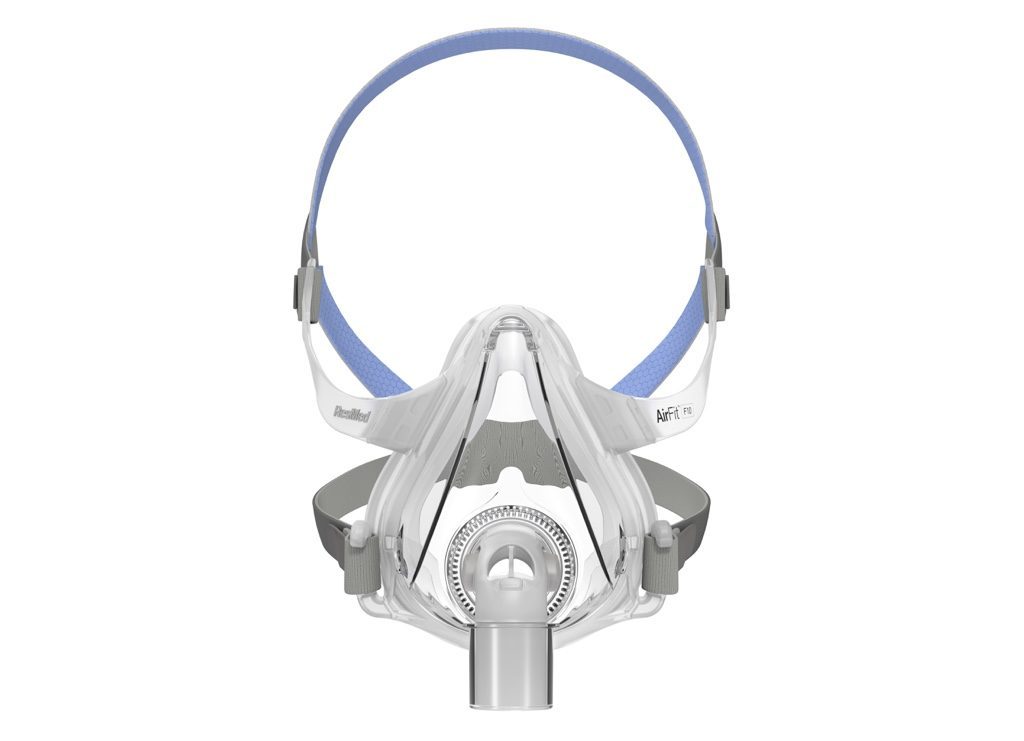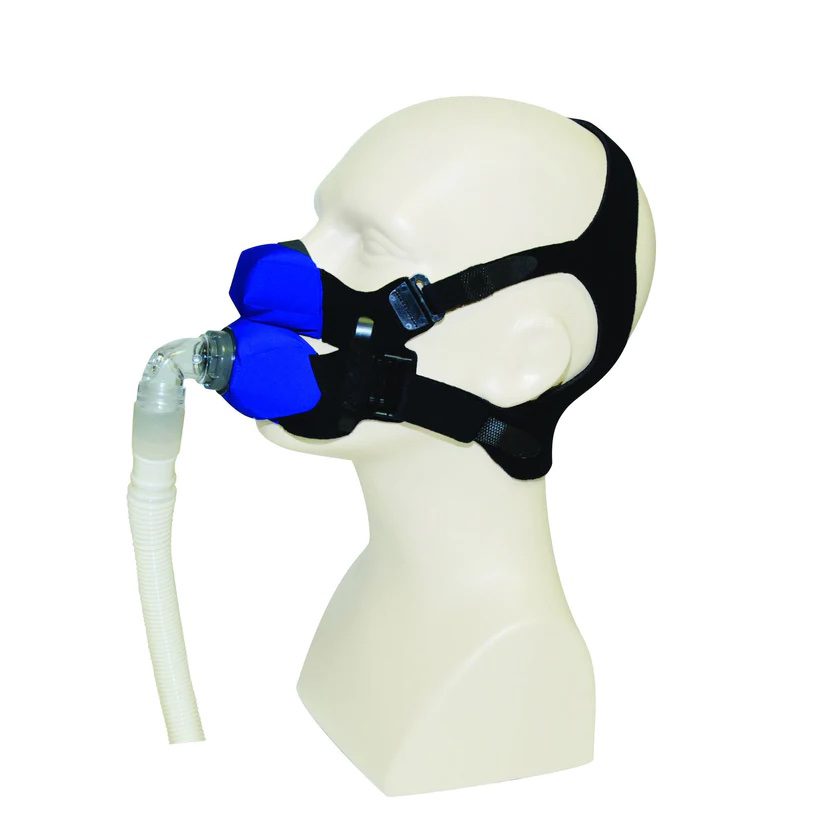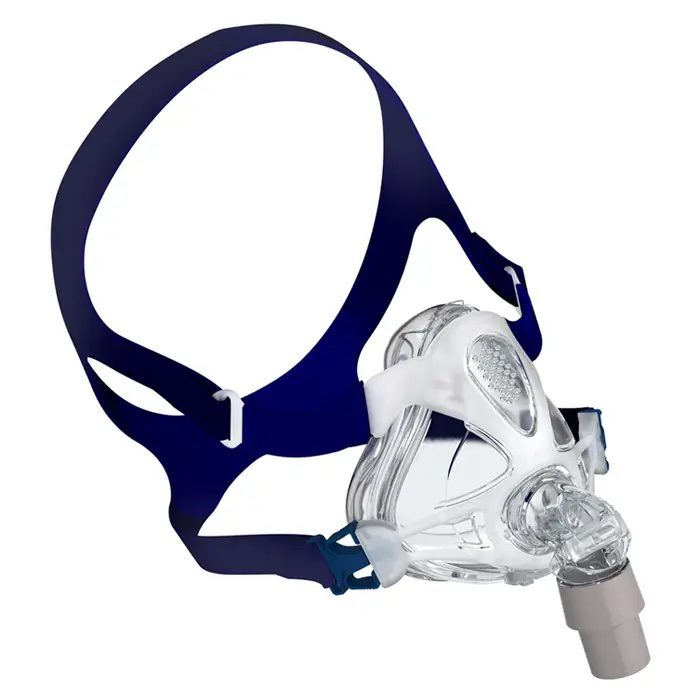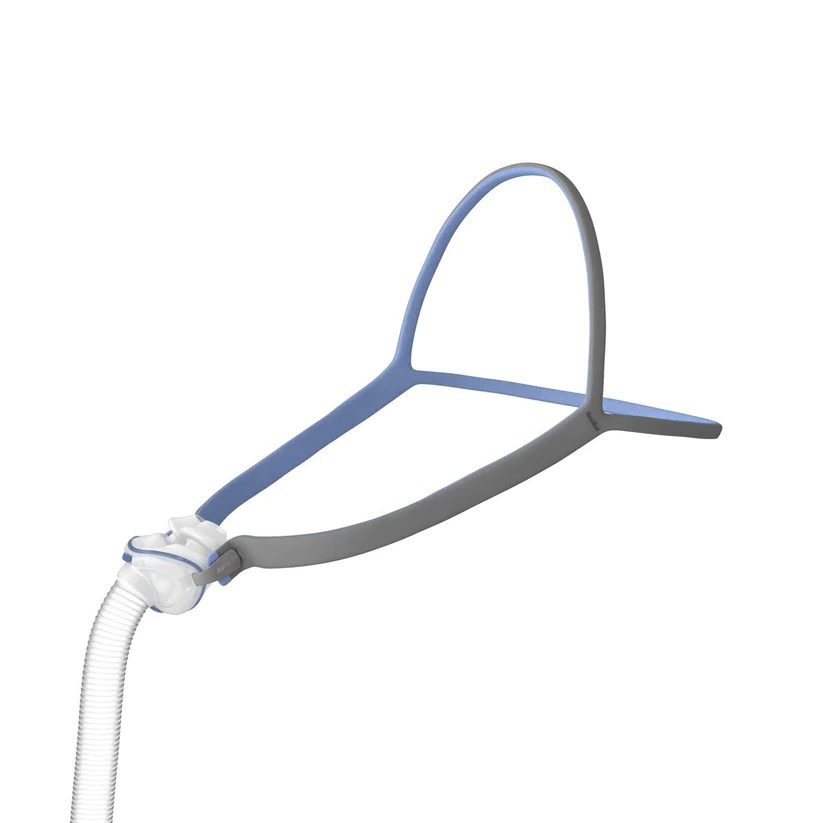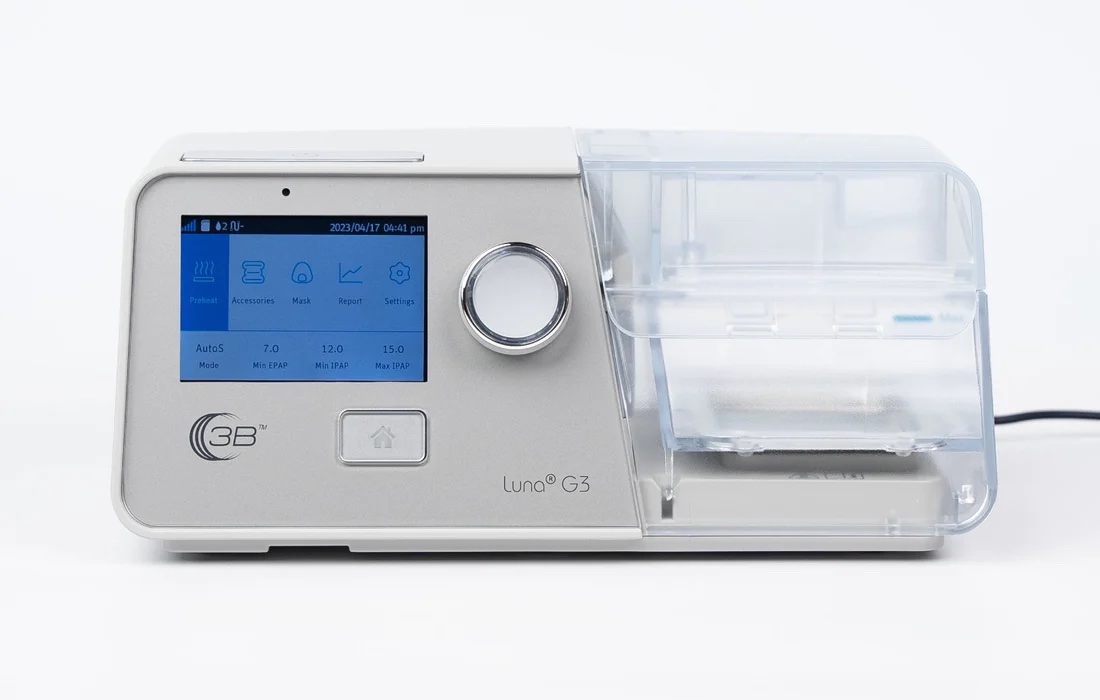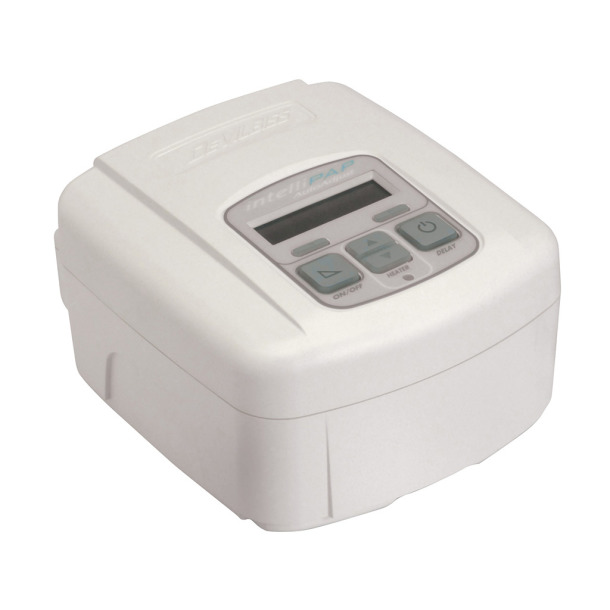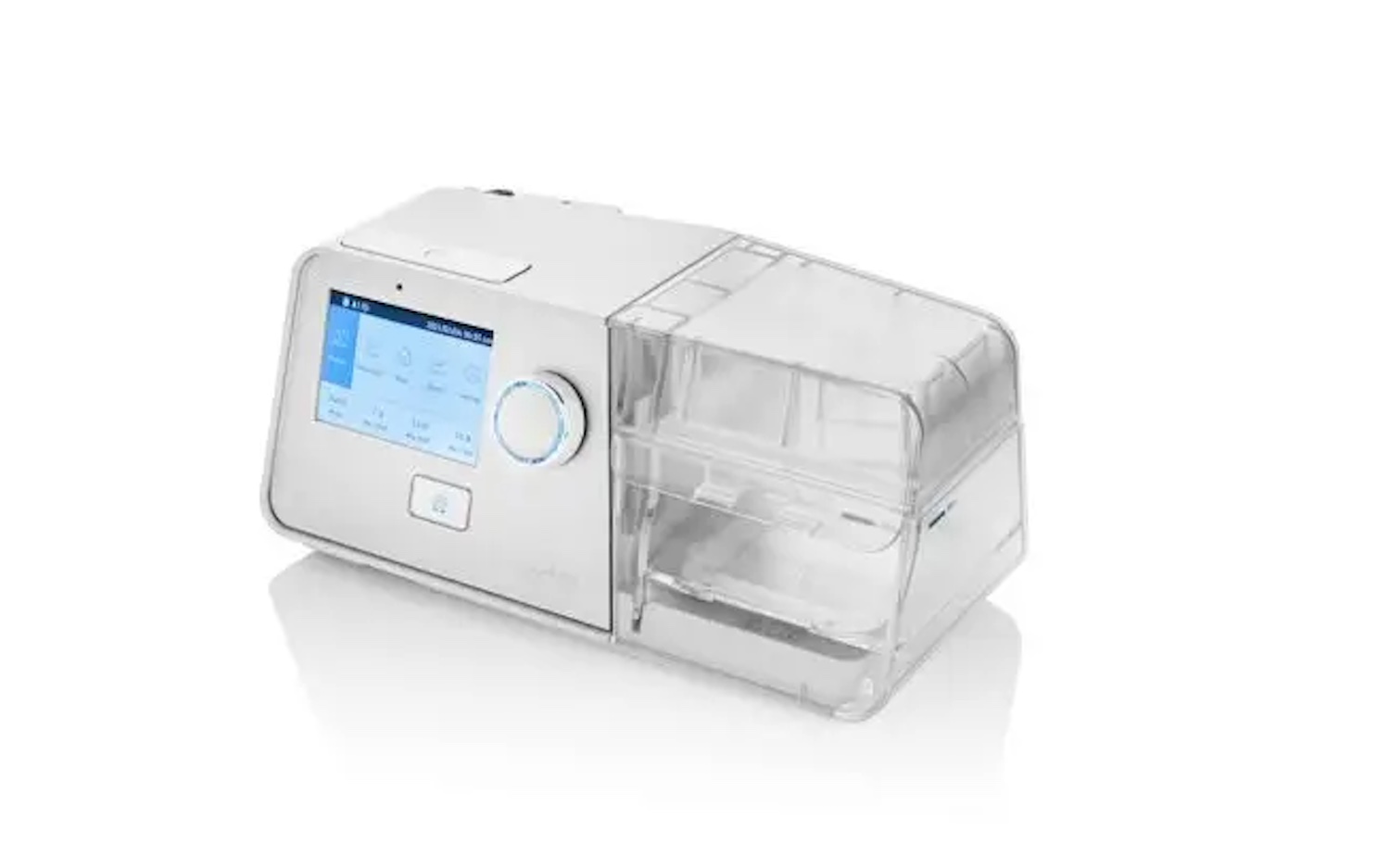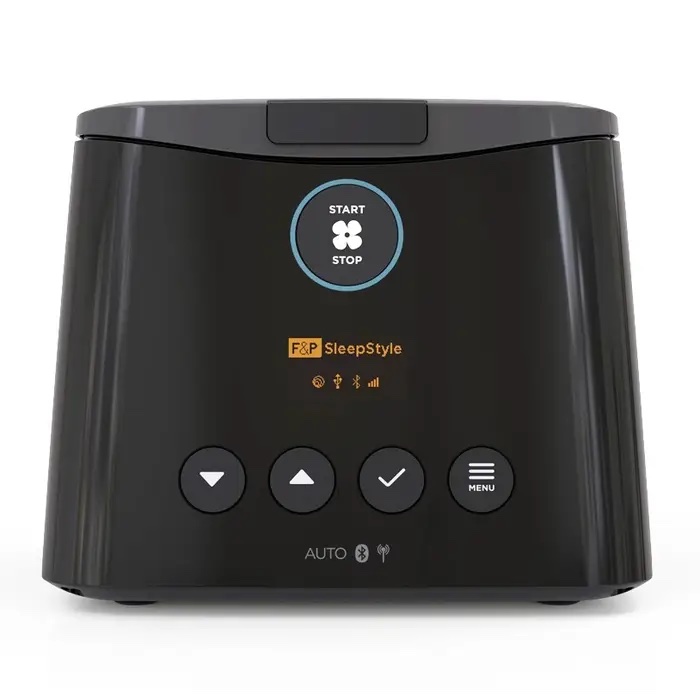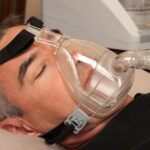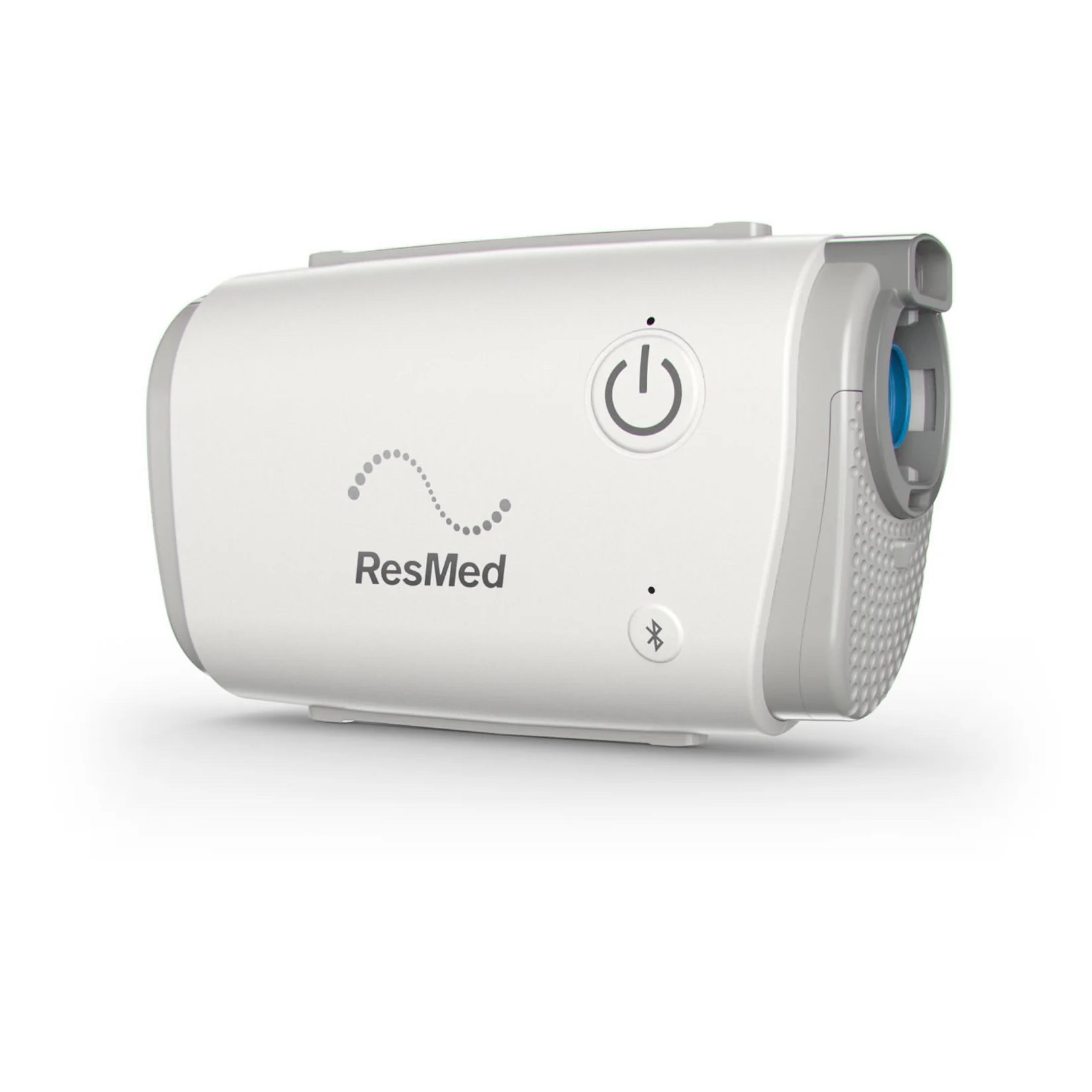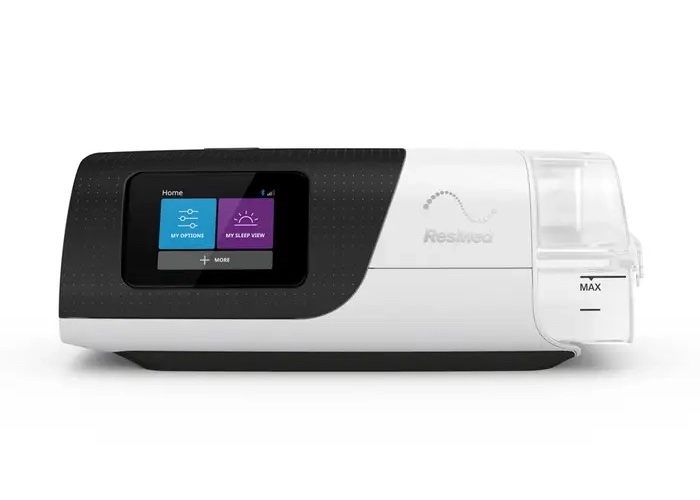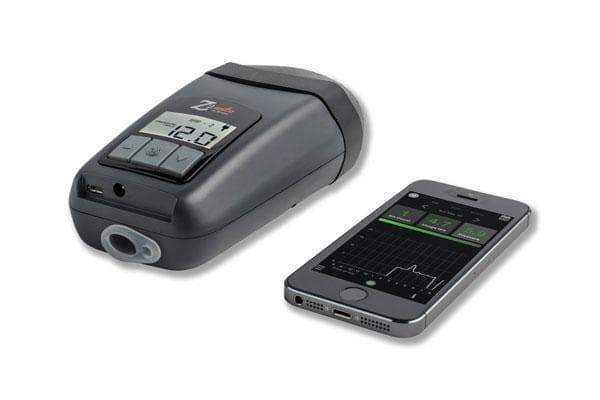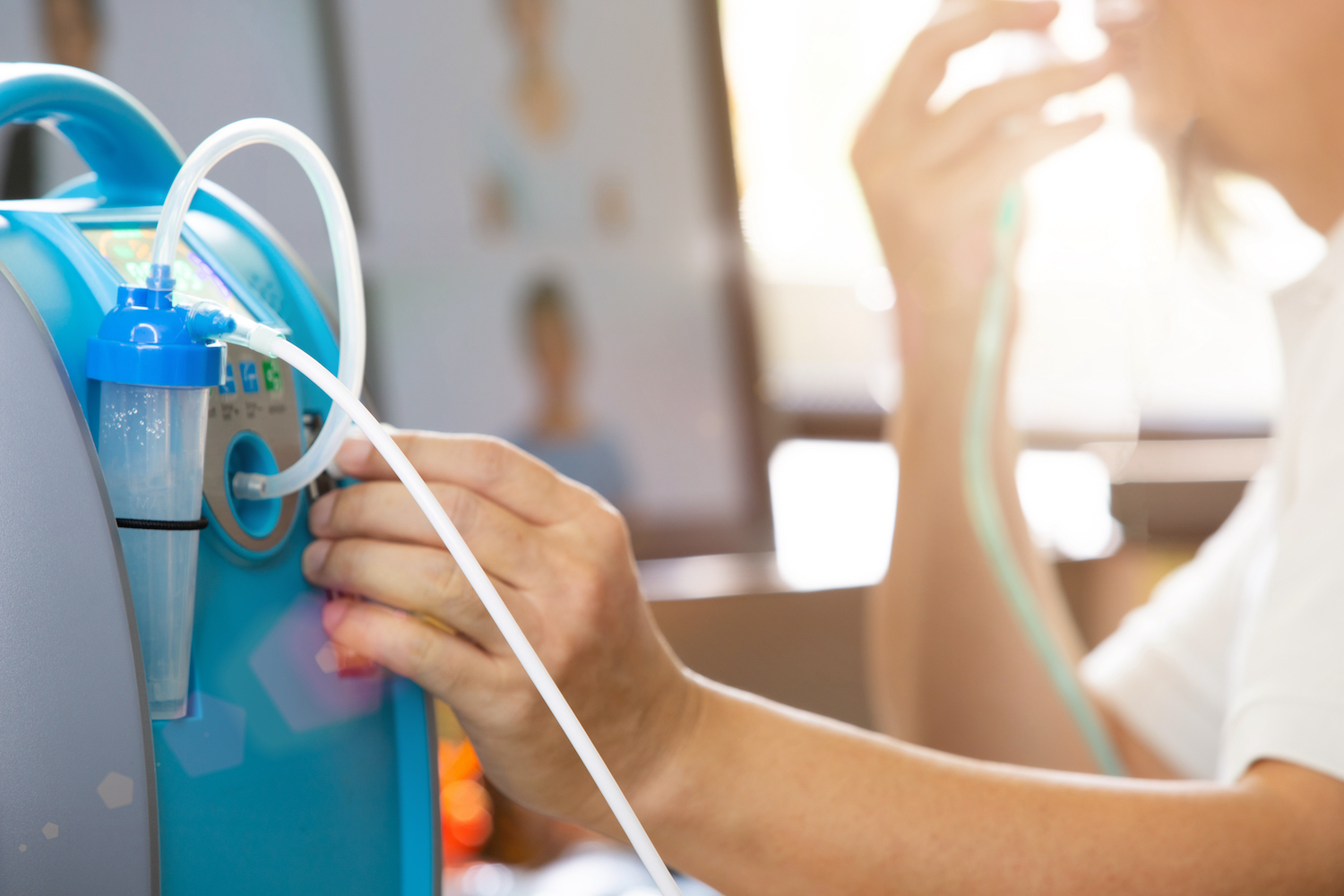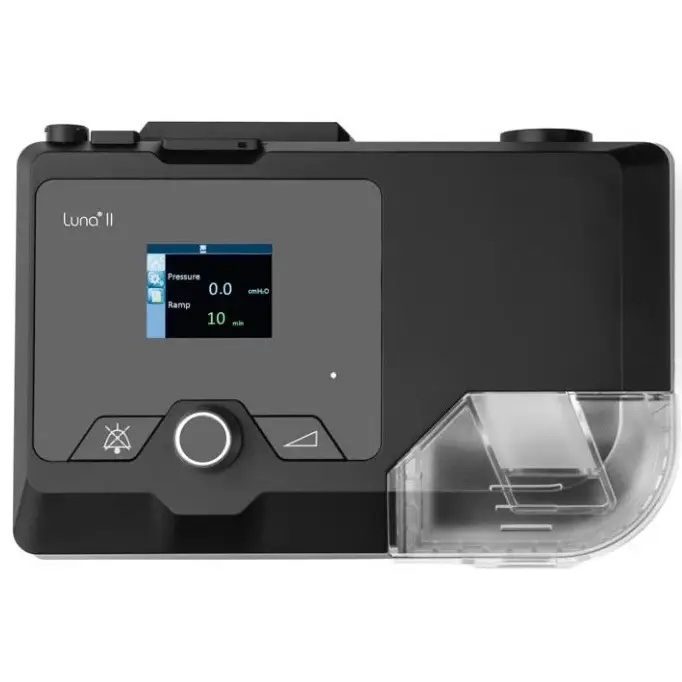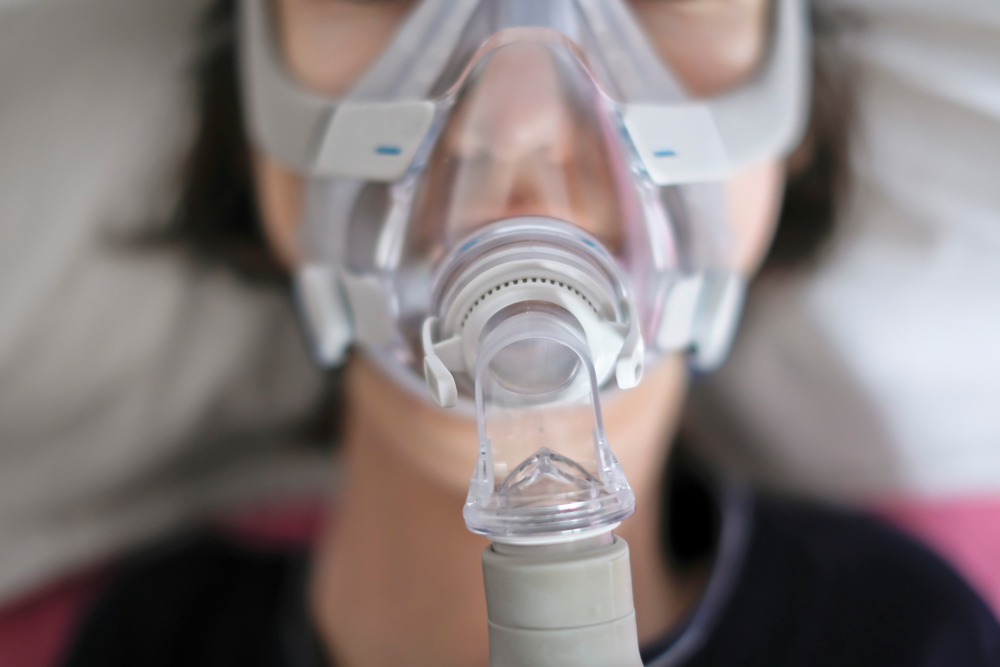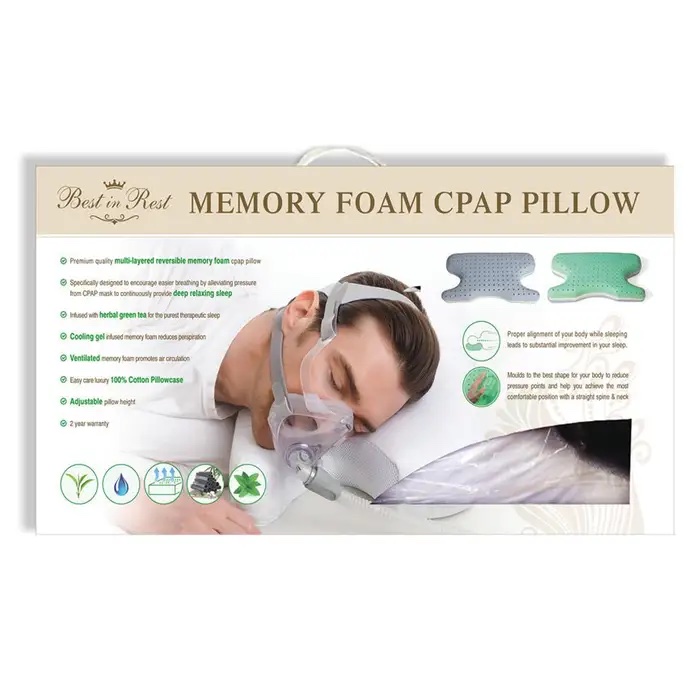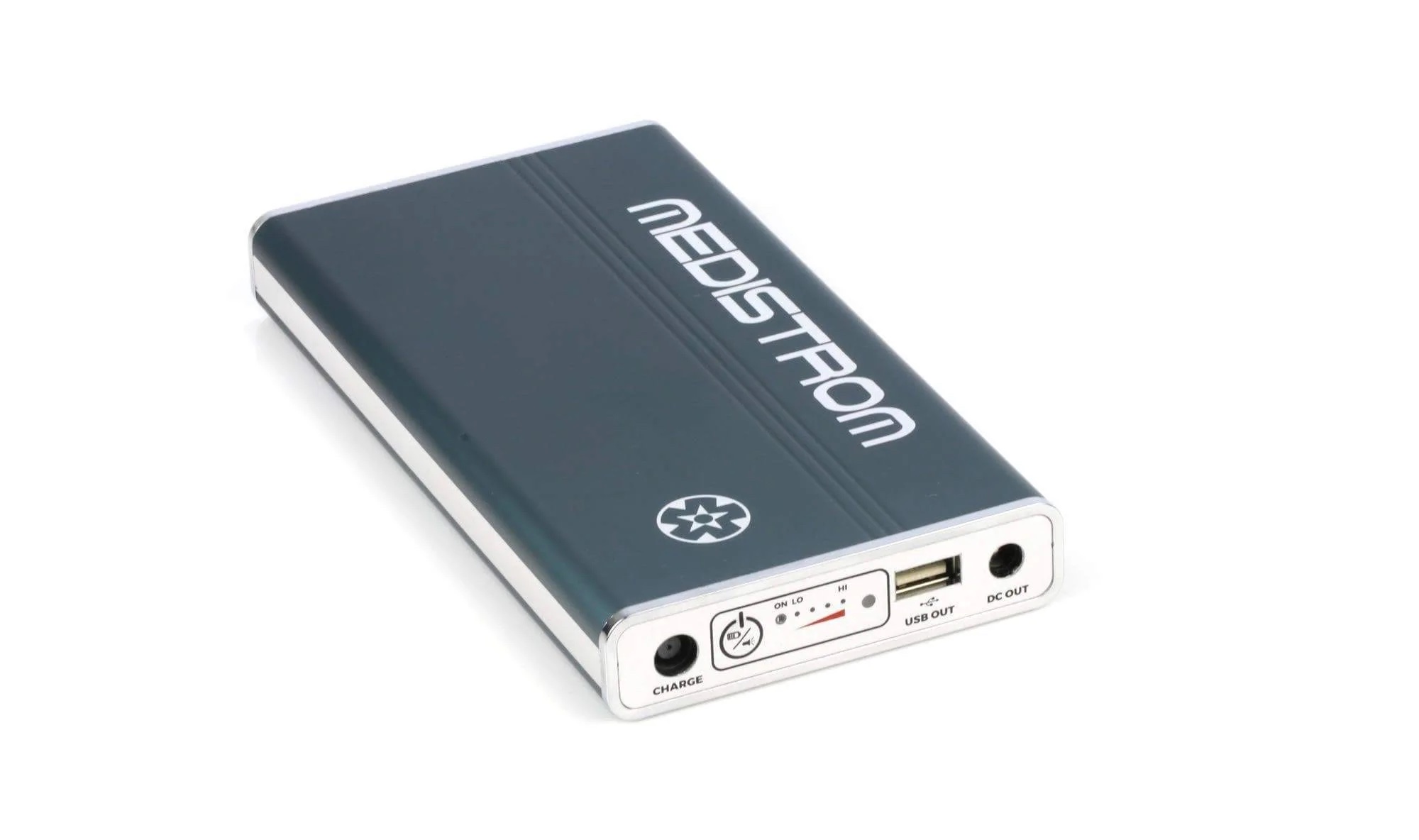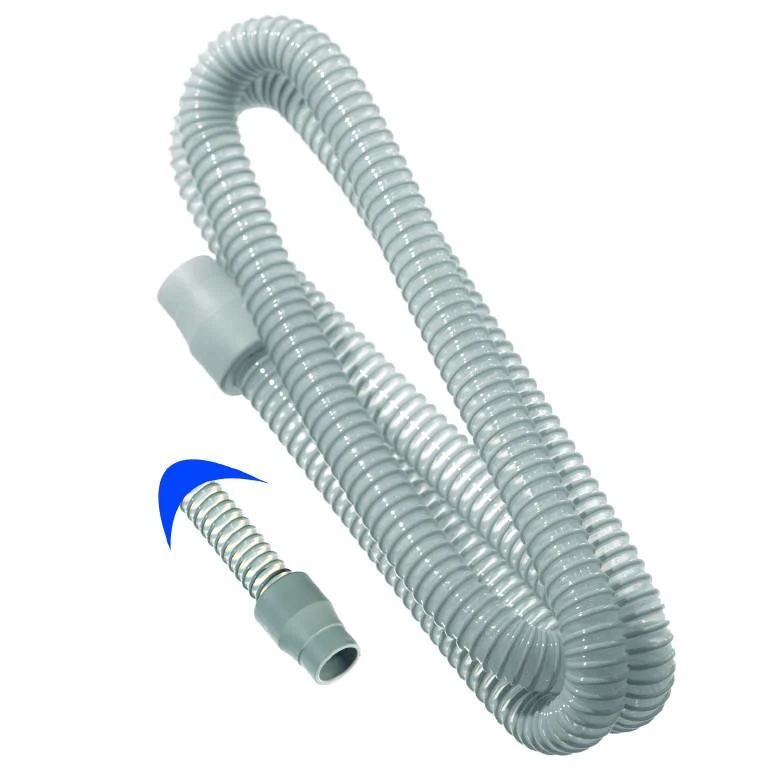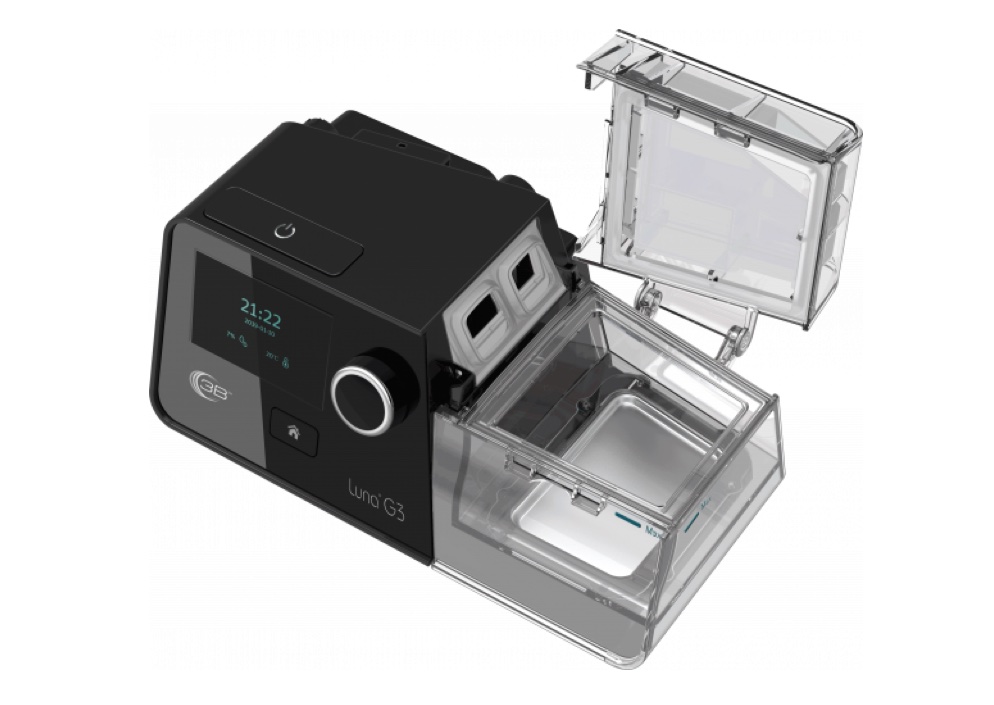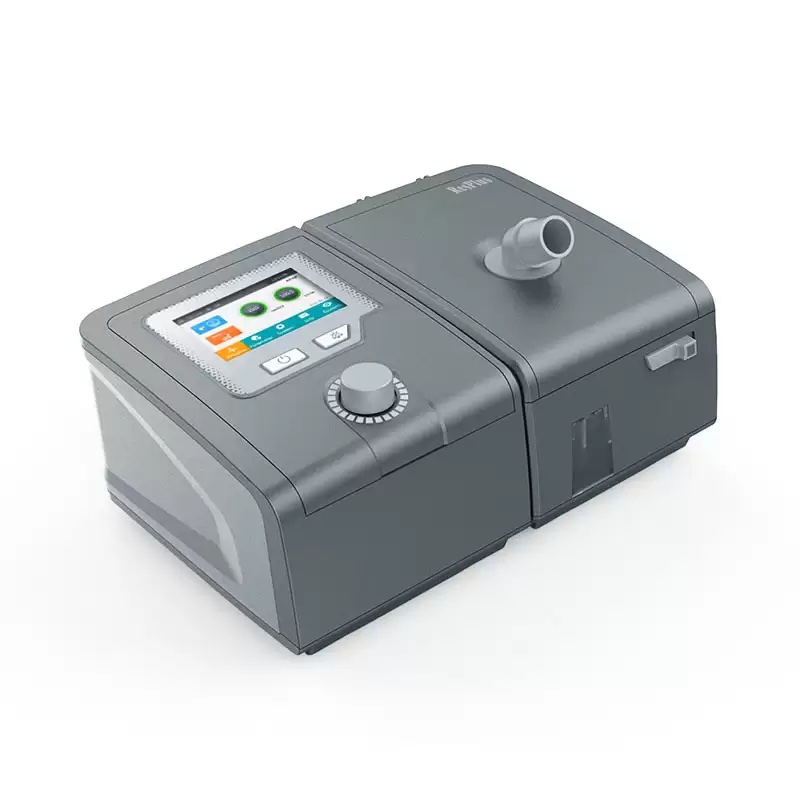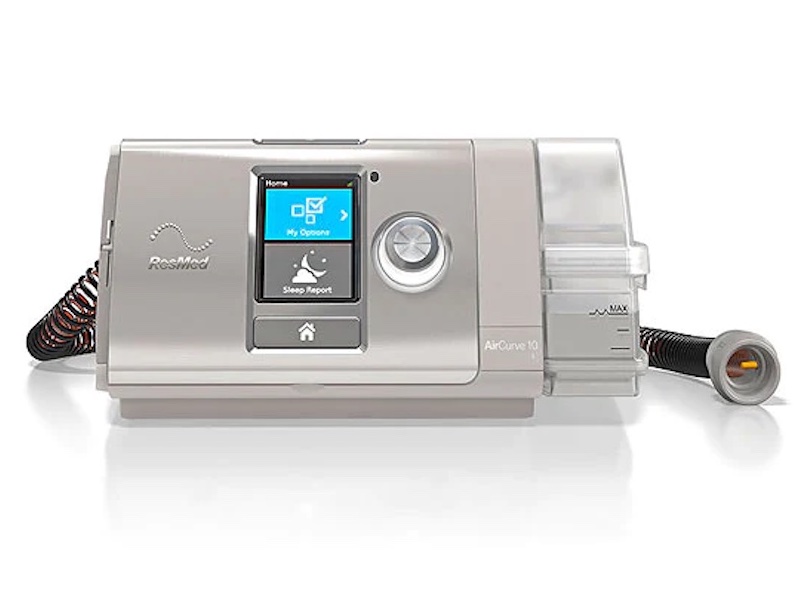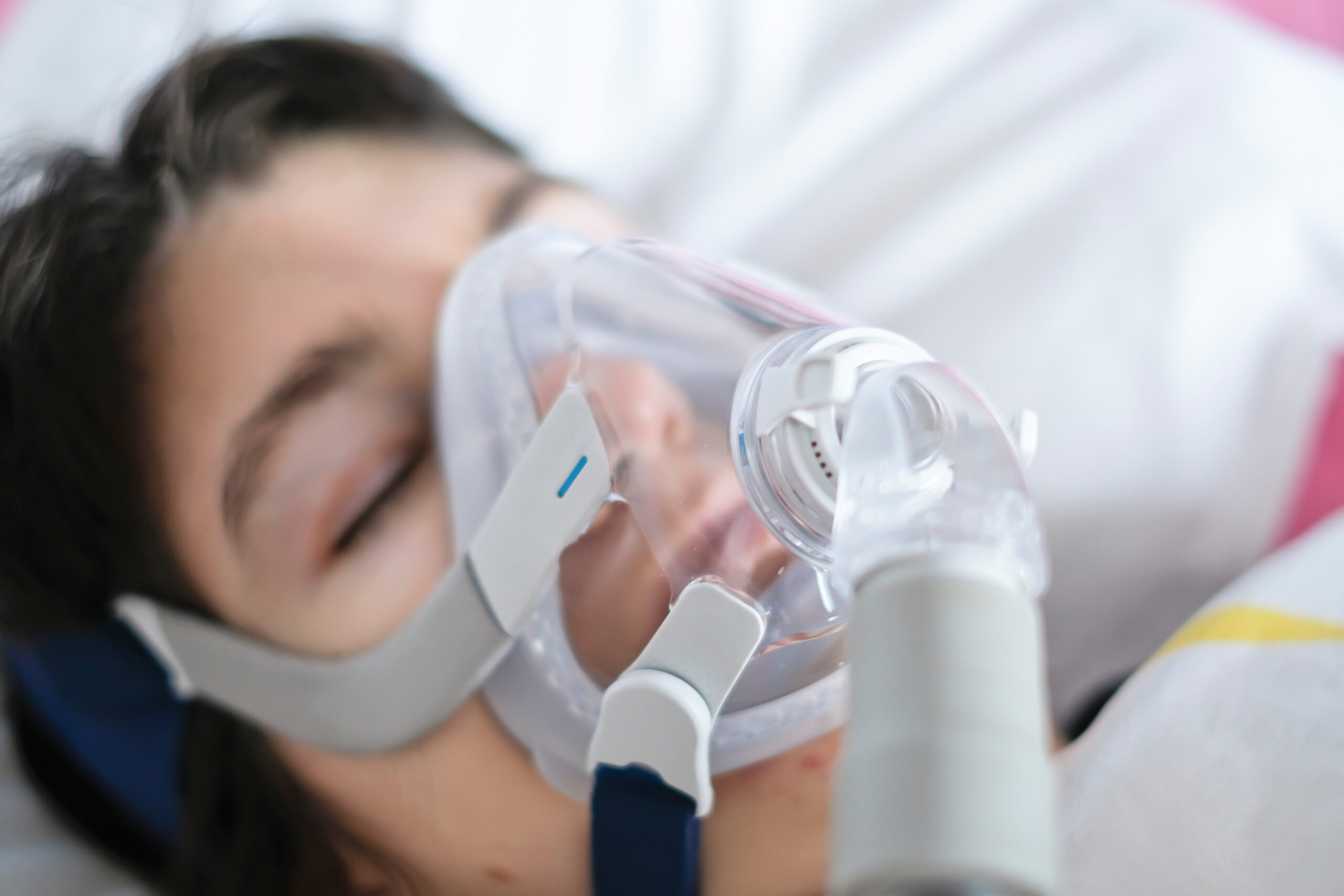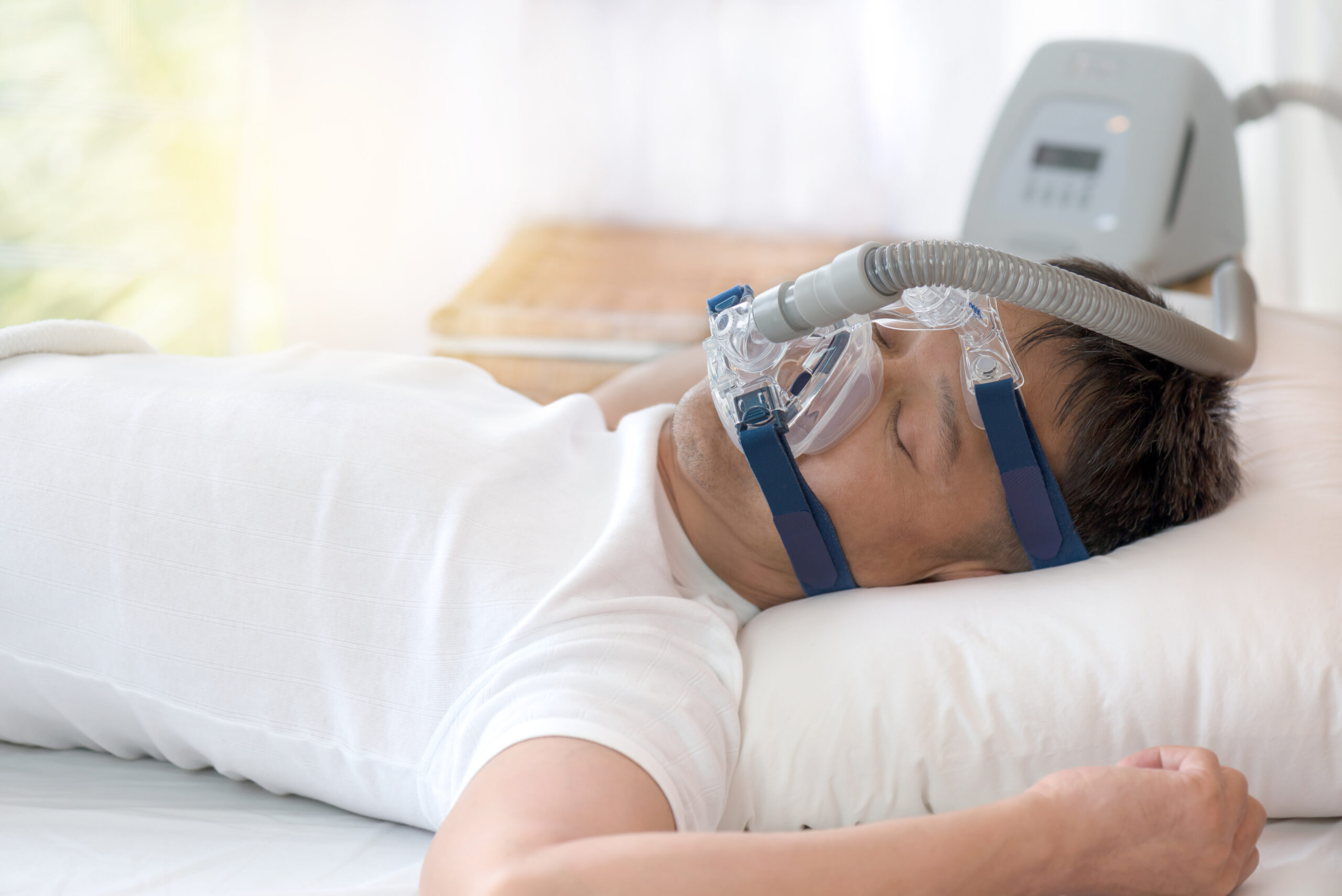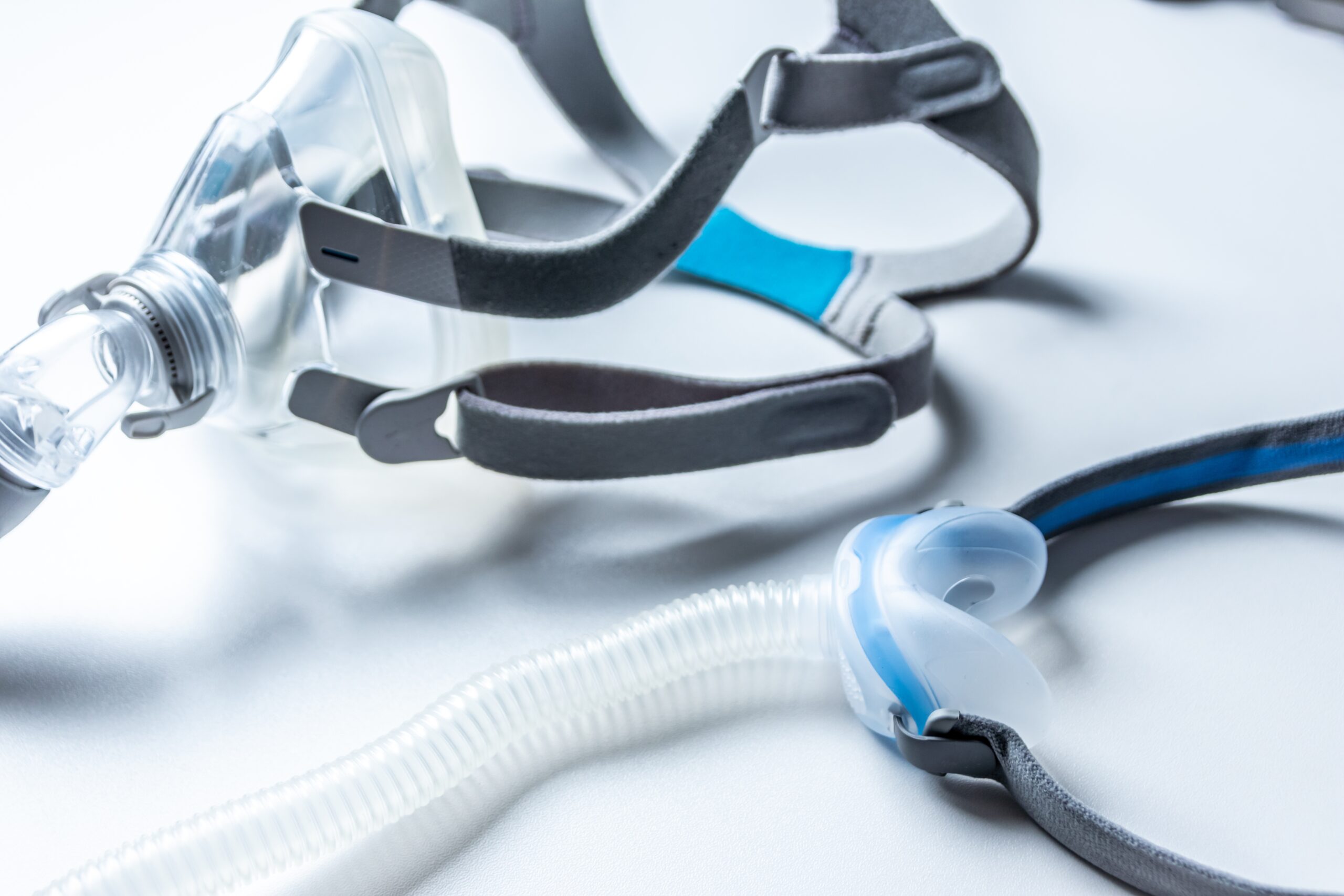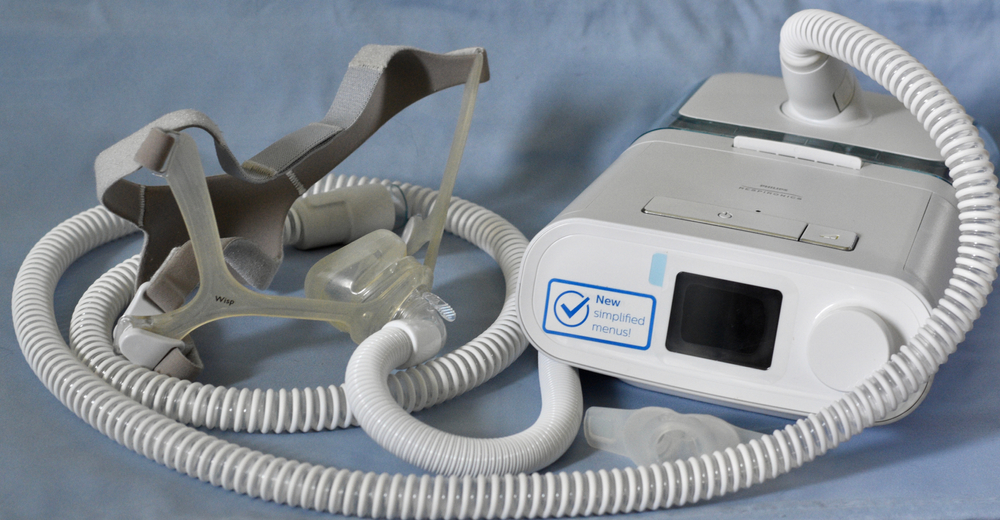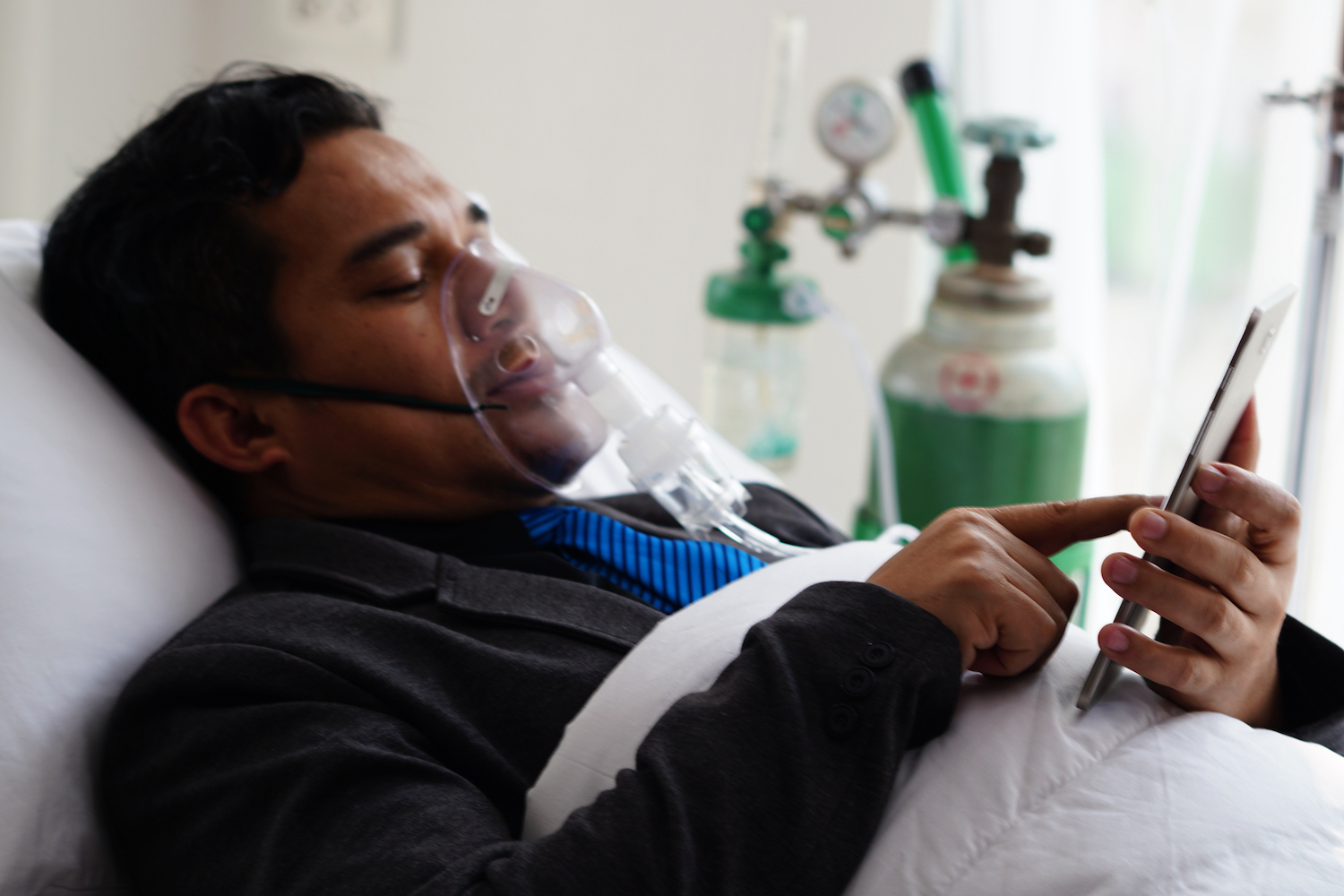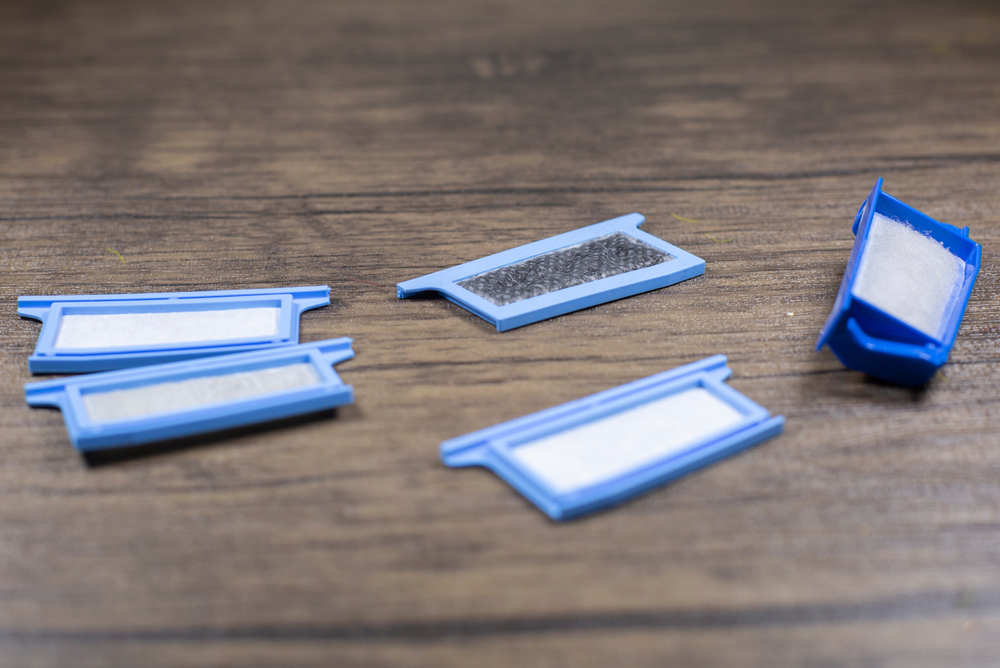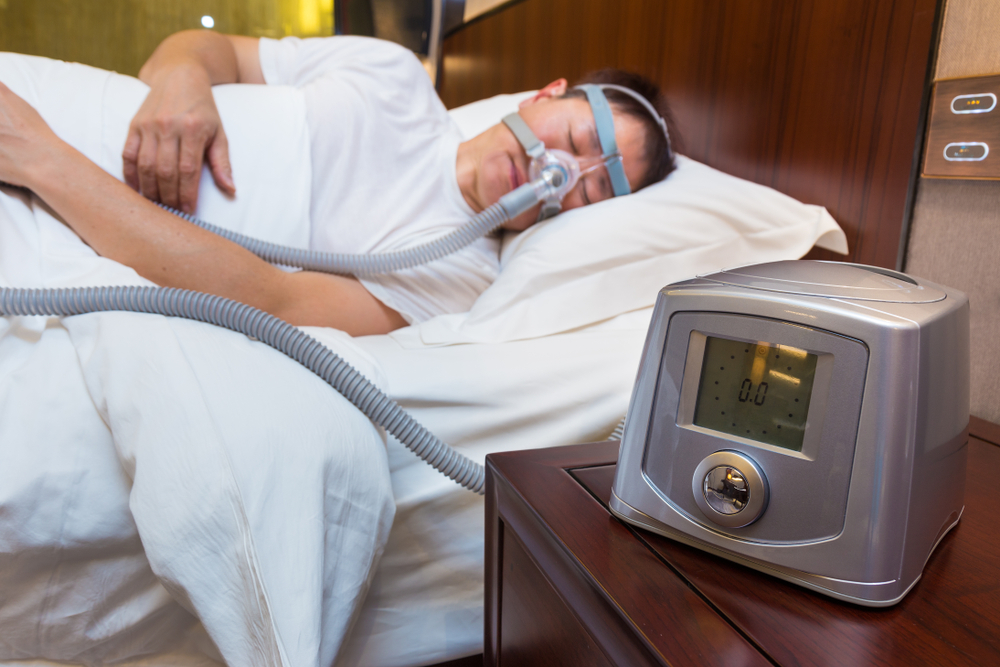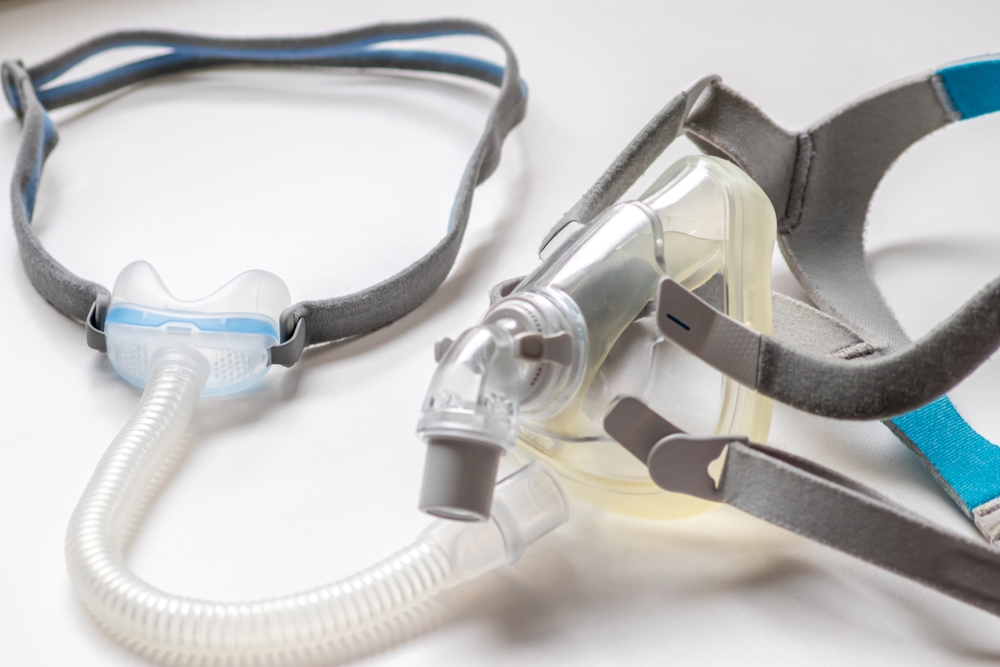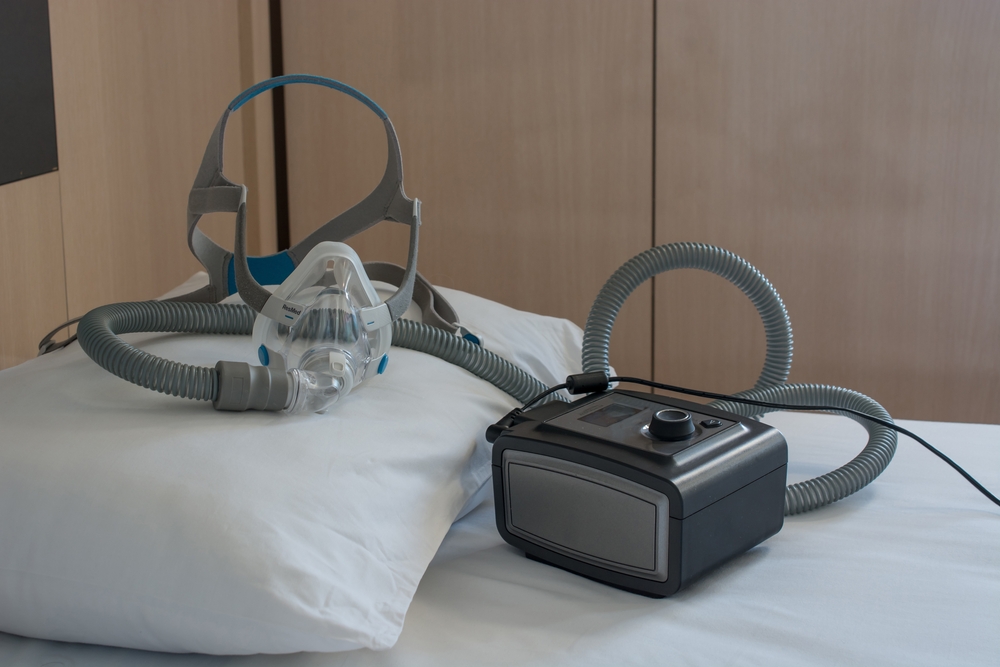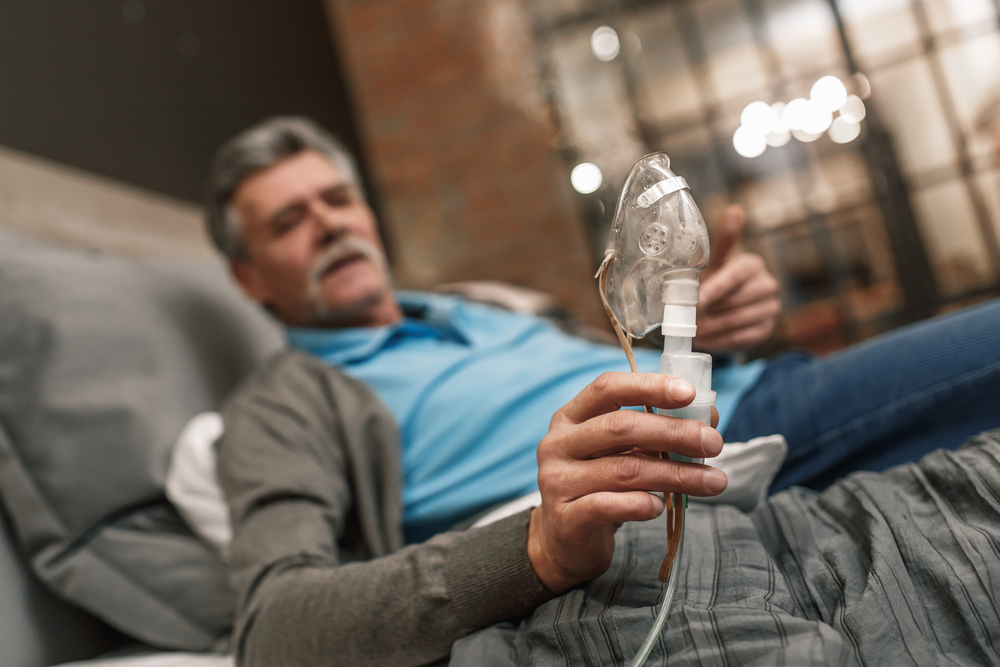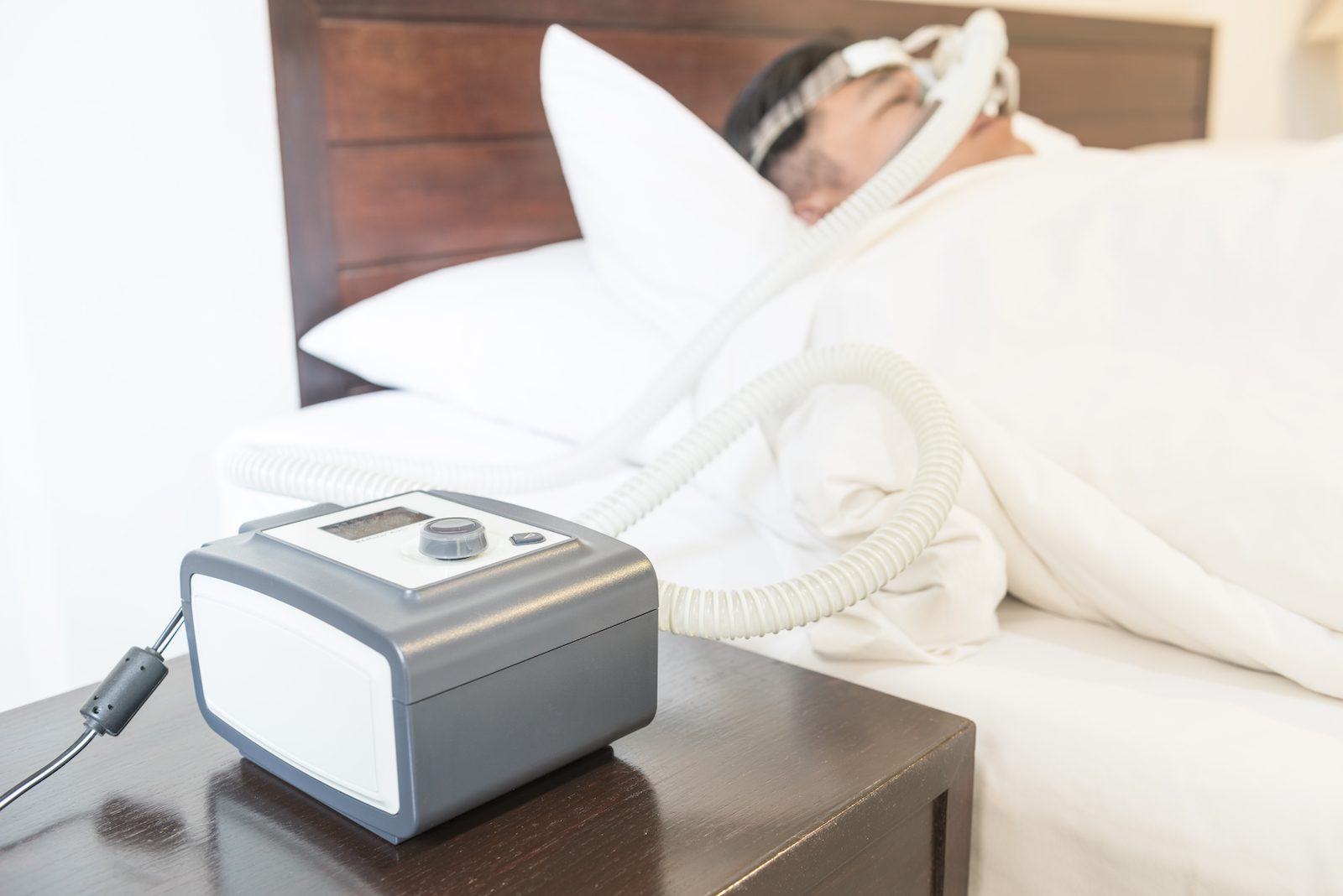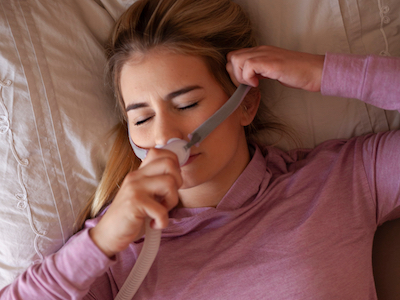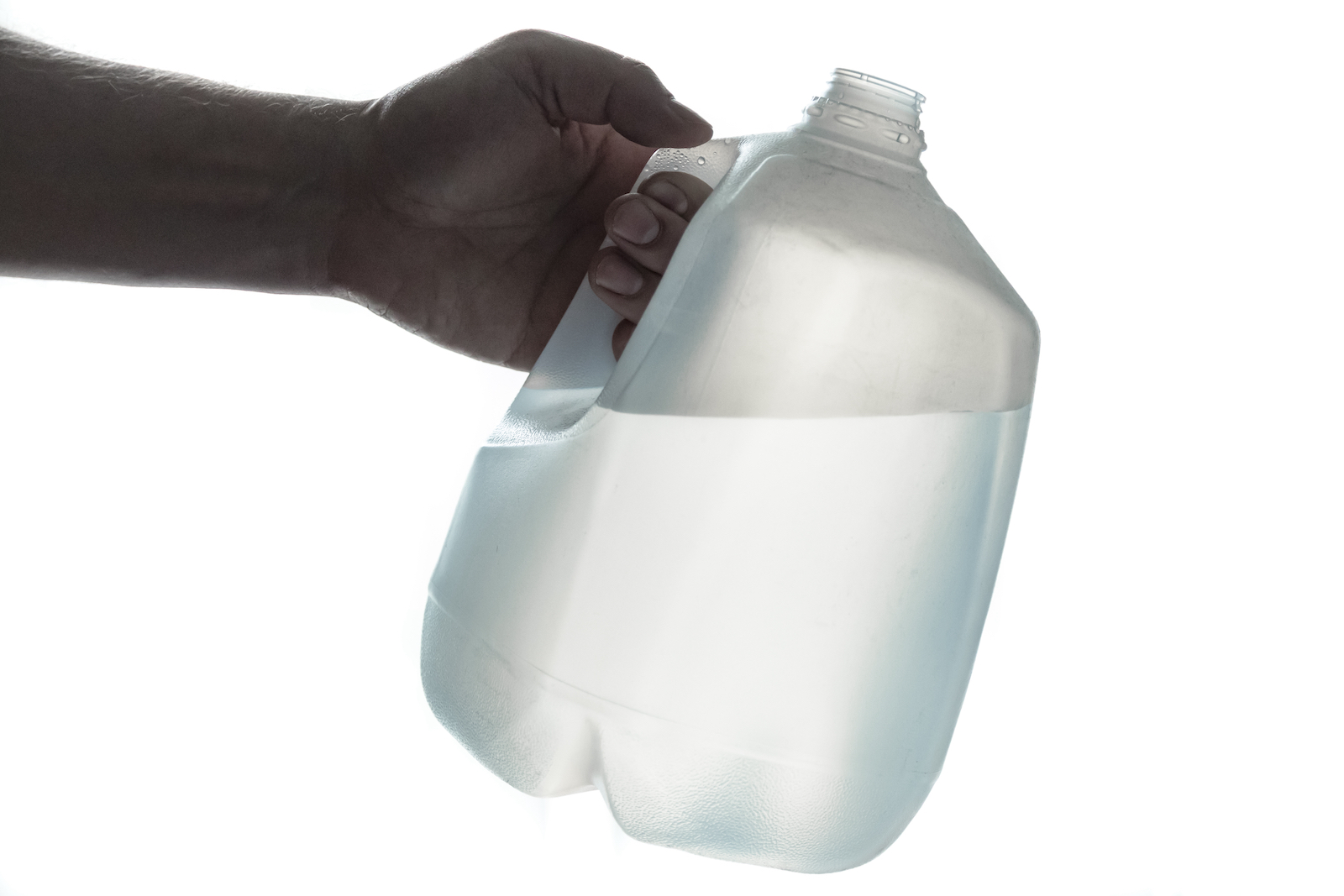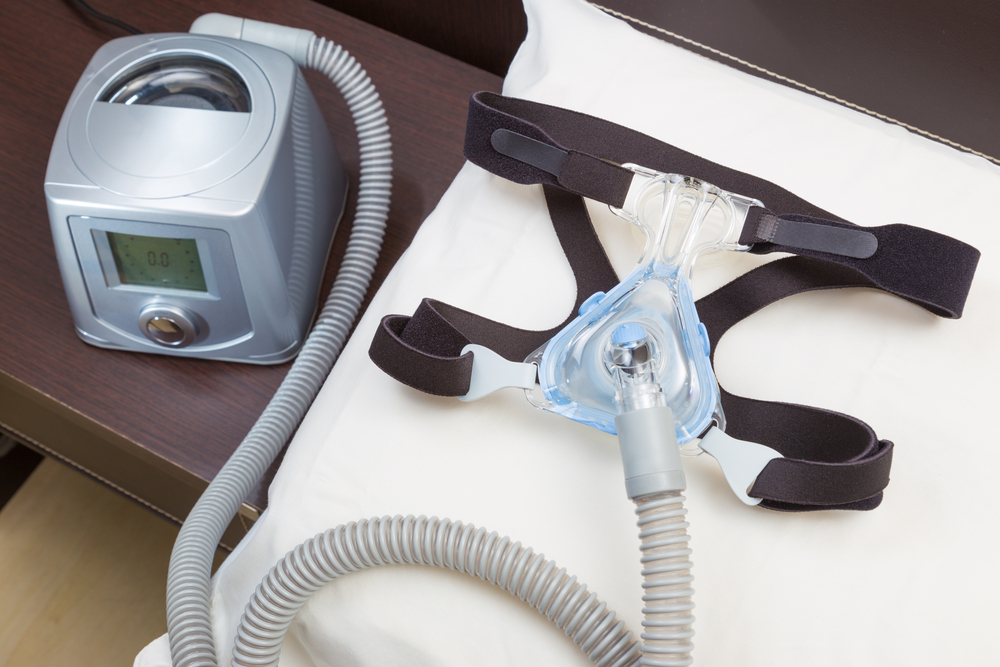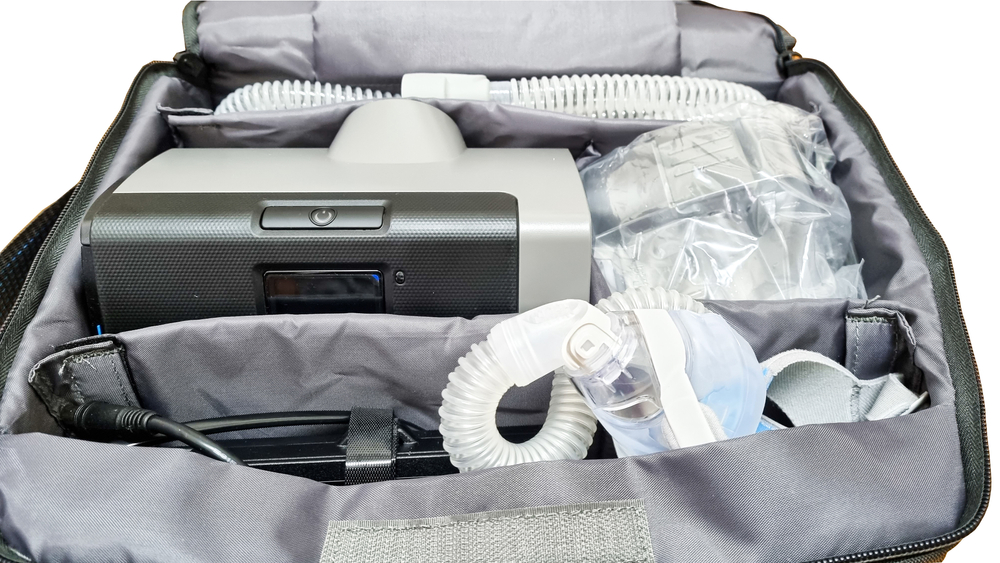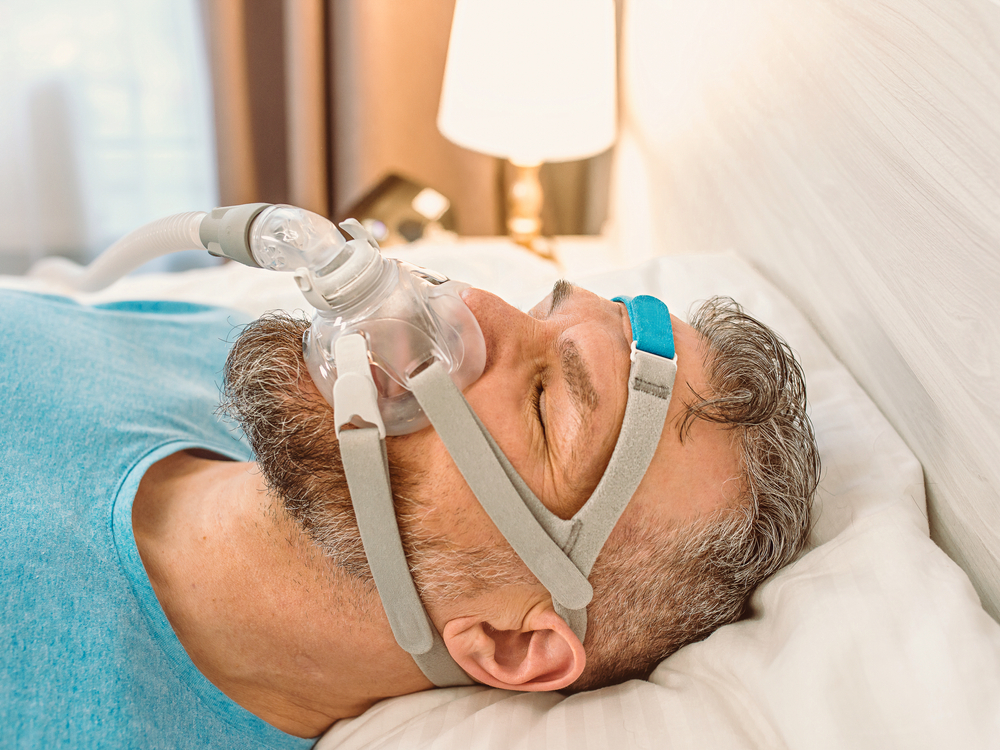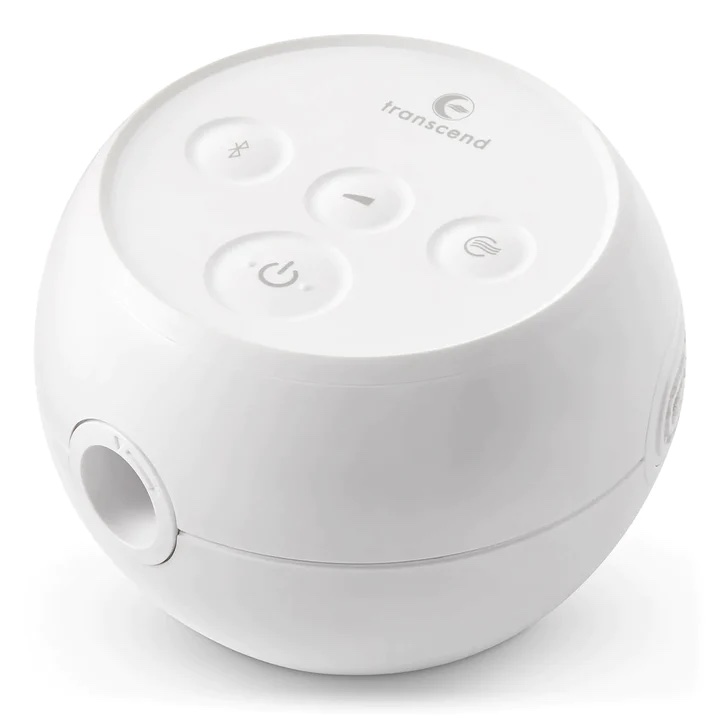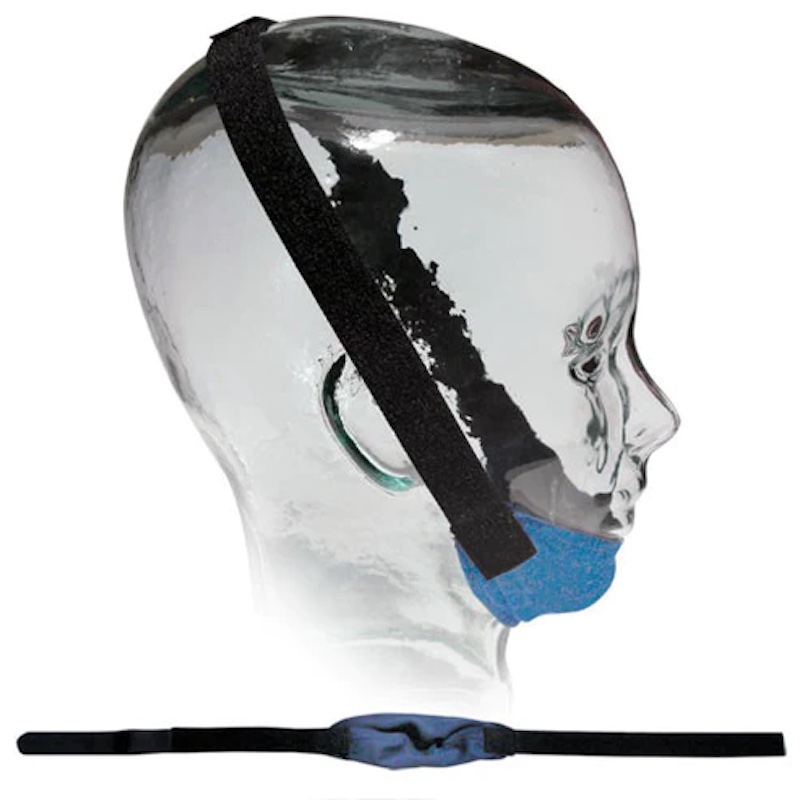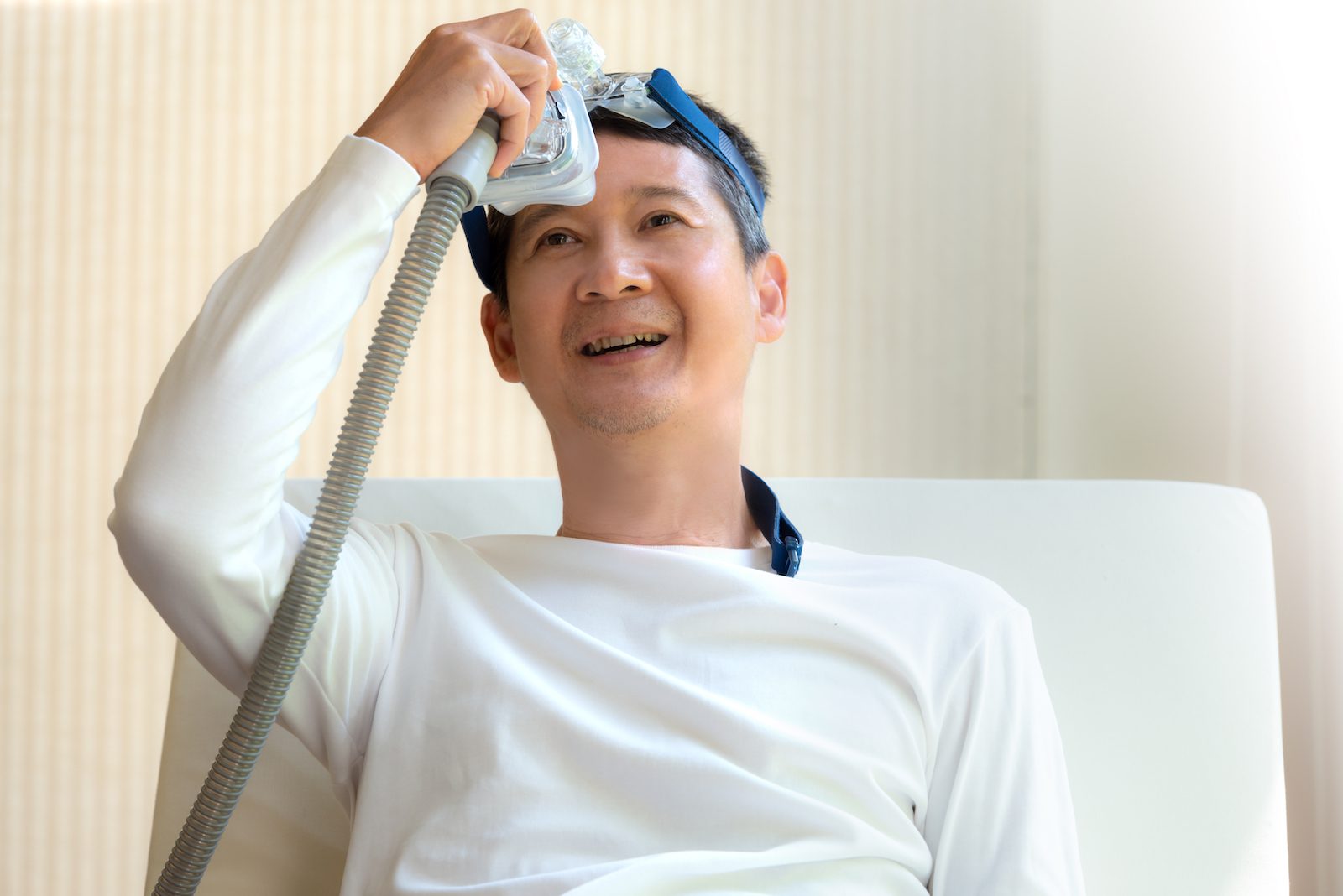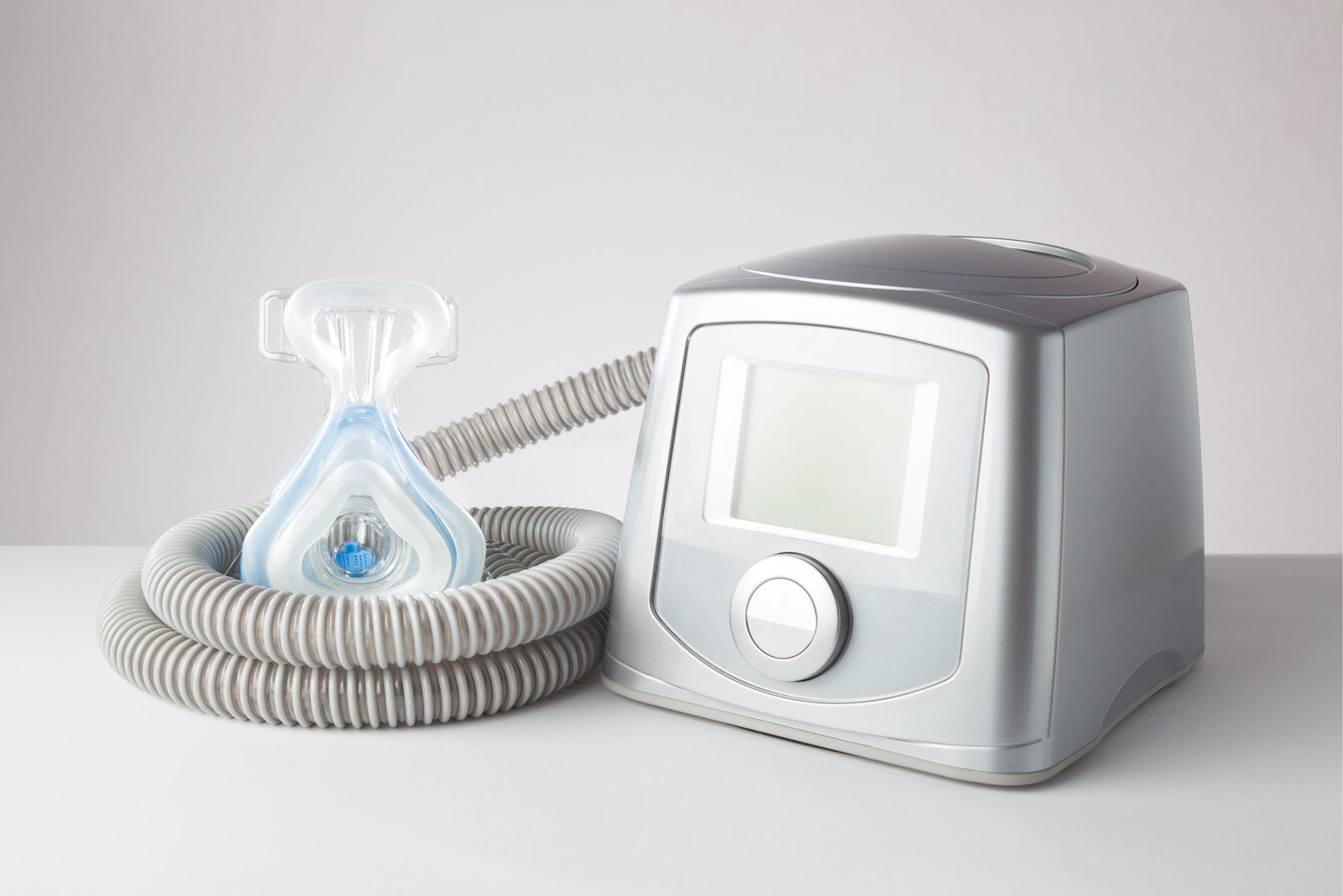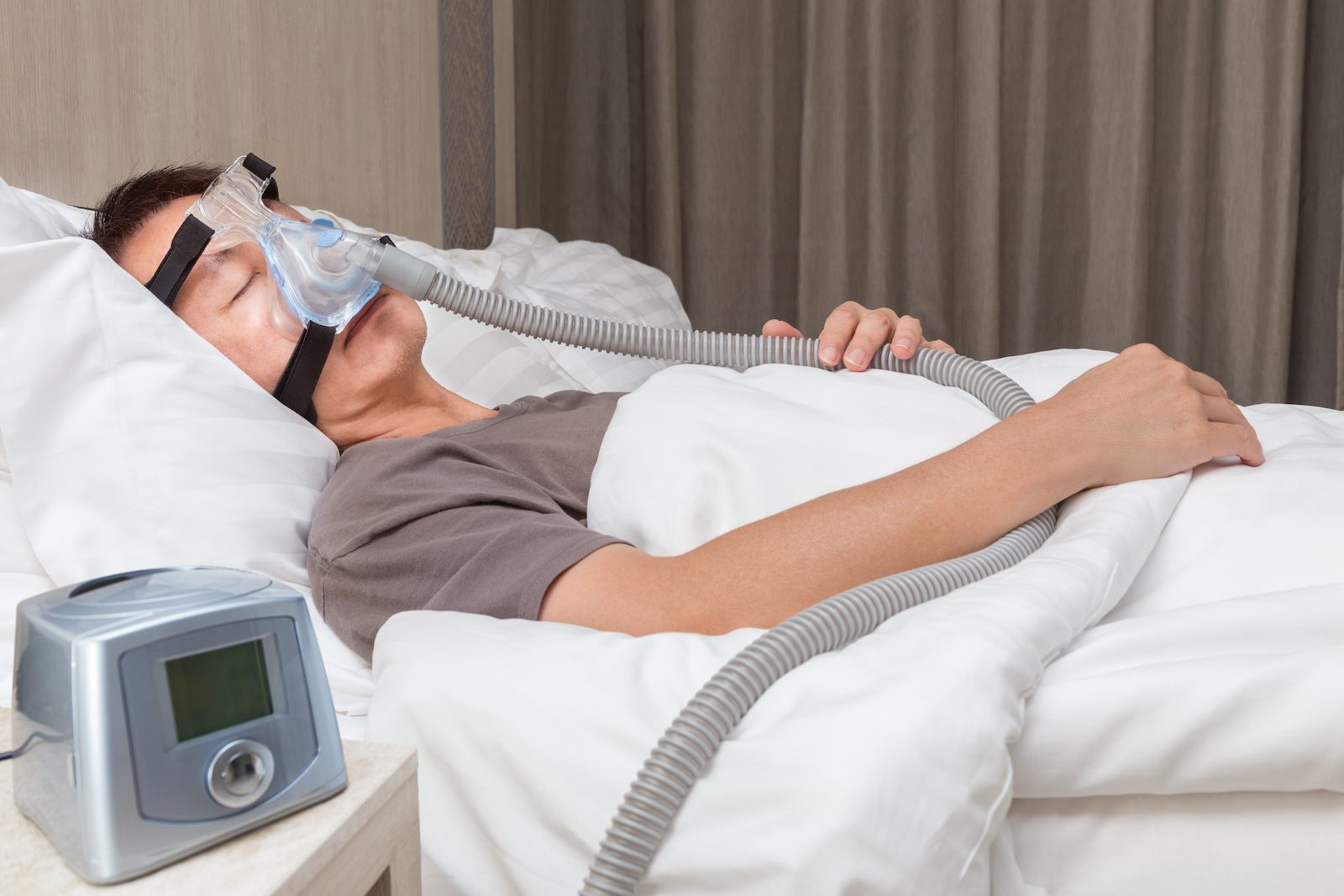If you have a sleep-related breathing disorder like obstructive or central sleep apnea, continuous positive airway pressure (CPAP) devices can help you maintain an open airway rather than breathing erratically throughout the night.
One important component of CPAP therapy is the humidifier. A humidifier adds moisture to the air, which makes breathing more comfortable without irritation from a dry airway. CPAP machine settings, including humidity, are tailored to each person’s unique needs to help ensure comfortable and consistent OSA treatment.
How Do CPAP Humidifiers Work?
CPAP humidifiers provide moisture to the air that the CPAP machine delivers to the upper airway. Humidification reduces the dryness and irritation in the nasal passages and throat that continuous airflow can cause.
A humidifier is a chamber filled with water that may be located within the CPAP device or as a separate component that can be attached to it. As air from the CPAP machine passes through the humidifier, it obtains moisture from the water in the chamber, which travels through the CPAP tubing and mask to the upper airway.
Humidification improves sleep apnea therapy in several ways. Extra moisture keeps the nasal passages and sinuses hydrated and healthy. A humidifier may also prevent or alleviate certain side effects from CPAP therapy like sore throat, sinus inflammation, nasal congestion, and nosebleeds.
How Is Humidity Produced?
Most CPAP humidifiers have adjustable settings for temperature and moisture level, allowing you to customize the amount of moisture added to the air flowing from the machine. The way in which the unit provides moisture varies from one model to the next.
Heated humidifiers have a heating element to warm the water in the chamber. Heat causes water to evaporate, adding moisture to the air before moving to the CPAP tubing. Some humidifiers also have heated tubing, which helps prevent condensation buildup in the tubing and mask.
Passover or passive humidifiers use a cool humidification process, allowing air to move over the surface of the water in the humidifier chamber until it reaches the required moisture level.
Types of CPAP Humidifiers
Several different types of CPAP humidifiers are available on the market, generally categorized as integrated or standalone units. Your sleep specialist can provide personalized guidance or recommendations to help you find the best option.
Most modern CPAP machines feature integrated humidifiers, which are built into the CPAP machine itself. They can be easier to use and maintain than standalone units, as they don’t require additional power sources or separate setup. Some manufacturers recommended integrated humidifiers for people who travel often or need higher levels of humidity.
Standalone humidifier units attach to a CPAP machine via a hose and require their own power source. Though less common than integrated humidifiers, they offer more flexible settings and can be easier to clean and maintain. They may be suitable for people who need more customization in their settings or who prefer a separate unit for ease of maintenance.
What Are Potential Side Effects of CPAP Humidifiers?
While humidifiers offer more comfort to CPAP users, they also have potential side effects. You might experience skin irritation if the temperature of the humidifier is set too high, or if the tubing is not properly insulated. And condensation can form inside the tubing and face mask, leading to moisture accumulation on the face, known as rainout.
Also, if you do not clean your CPAP humidifier regularly, bacteria and mold can grow inside the water chamber, which can increase the risk of respiratory infections.
To avoid these side effects, sleepers should follow basic maintenance guidelines for the best experience with humidification.
- Clean the humidifier regularly: Proper care involves emptying the water chamber daily and cleaning the chamber and tubing with soap and water at least once a week.
- Adjust the temperature and humidity level: Tailoring settings to an individual's needs can prevent condensation and skin irritation, as well as lead to greater symptom reduction.
- Use a CPAP mask that fits well: A well-fitted CPAP mask can help prevent air leakage and increase the therapy’s effectiveness.
- Use distilled water: Distilled water is free of minerals and other impurities that can build up in the components of the humidifier, making it difficult to keep clean. Avoid tap water, which may contain biological contaminants that could lead to respiratory infection.
By following these steps, you can minimize the negative side effects of CPAP humidifiers and maximize the health benefits. If any side effects persist or worsen over time, consult with a health care provider.
How to Adjust Humidifier Settings
The best CPAP humidifier settings depend on your personal preferences and the severity of your sleep apnea. While a qualified sleep specialist can offer specific guidance on the best way to adjust your settings, you can also take steps to ensure your humidifier works properly.
- Start with the manufacturer's suggestions: Most CPAP humidifiers come with a recommended starting point for temperature and humidity levels. Your provider may start with these settings and adjust them as needed based on your comfort level and side effects.
- Consider your sleep environment: If you live in an arid climate or use air conditioning or heating that dries out the air, you may require a higher humidity setting. Similarly, excessive moisture or condensation in your tubing could indicate the need to adjust the temperature setting.
- Experiment with different settings: Try adjusting the temperature and humidity settings incrementally to find the combination that works best for you. Record the settings you try and how you feel during and after each night of use.
Finding the best humidifier settings may take some trial and error. It's important to follow the instructions provided by the manufacturer and your health care provider before adjusting the settings on your CPAP machine.
Understanding CPAP Humidifier Care
Proper care and maintenance of your CPAP humidifier ensures optimal performance and prevents the buildup of bacteria and other harmful microorganisms. Caring for your CPAP unit and its humidifier involves several steps.
- Empty and refill the water chamber daily: Refresh the humidifier by adding new distilled water. Impurities in tap water or bottled water may make it harder to clean properly.
- Clean the water chamber weekly: Once a week, clean the water chamber with mild soap and warm water. Rinse it thoroughly and let it air dry before refilling.
- Clean the humidifier hose and mask regularly: Wipe down the hose and mask with a damp cloth every day to remove any dirt or debris. Weekly, wash them in warm soapy water and rinse thoroughly before air-drying.
- Replace the water chamber and humidifier filter as needed: These components should be replaced regularly, according to the manufacturer's instructions. A dirty or worn-out filter can affect the performance of the humidifier and cause health problems.
- Inspect the machine and accessories regularly: Check the machine and its accessories routinely for signs of wear and tear, and replace any damaged or worn-out parts as needed.
Different humidifier models may have specific care requirements. Regular cleaning and maintenance can help ensure the longevity and effectiveness of your CPAP humidifier and improve your overall experience.
When Should You Replace Your CPAP Humidifier?
The lifespan of a CPAP humidifier depends upon the frequency of usage and how well it's maintained. It’s a good idea to follow the manufacturer’s replacement recommendations and your provider’s advice. But some basic guidelines may help you identify when it is time to look for a new humidifier.
If the humidifier is not producing enough moisture, even at high settings, or if the chamber is cracked and leaking, you may be due for a replacement. Tears, clogs, and discoloration of the filter are also signs that it’s time for new parts. An increase in nasal congestion, mouth dryness, or airway irritation may indicate your current humidifier is no longer fully effective.
The humidifier chamber should be replaced as needed, at least once every year. The filter, which removes contaminants from the water, should also be changed regularly. Disposable filters should be replaced every 2 to 4 weeks, while reusable foam filters should be changed at least every six months.
When you think it's time to replace your CPAP humidifier, you can contact your equipment supplier or health care provider to obtain a new one. Some insurance plans will cover the cost of a replacement humidifier if it’s medically necessary.
Before purchasing a replacement, consult with your sleep specialist to ensure that you are using the appropriate equipment and settings for your sleep apnea therapy. They can also help you determine if a new humidifier is necessary or if there are other adjustments that can be made to improve your therapy experience.
How to Choose a CPAP Humidifier
When buying a CPAP humidifier, take into account the type of device, humidification settings, and maintenance requirements. Additional factors to consider can include your lifestyle and personal preferences.
- Compatibility
Make sure that the humidifier is compatible with your CPAP machine and mask. You may need to purchase an adapter or connector if the humidifier and CPAP machine are not an ideal fit. - Size and portability
If you plan to travel with your CPAP machine, you may want a unit with a built-in humidifier rather than a standalone piece. - Price
CPAP humidifiers can vary in price, so consider your budget when shopping for equipment. - Reviews and ratings
Read reviews and ratings from other users to get an idea of the quality and performance of different humidifiers.
Choosing the best CPAP humidifier for your circumstances can help ensure that you’re getting the most effective, customizable therapy to improve your sleep and quality of life.



